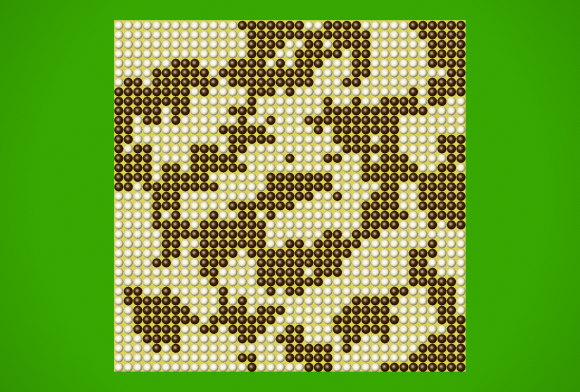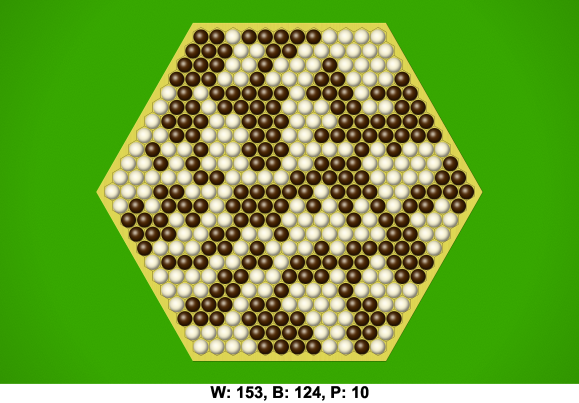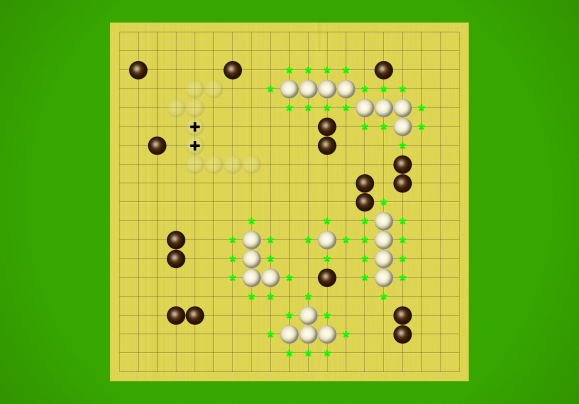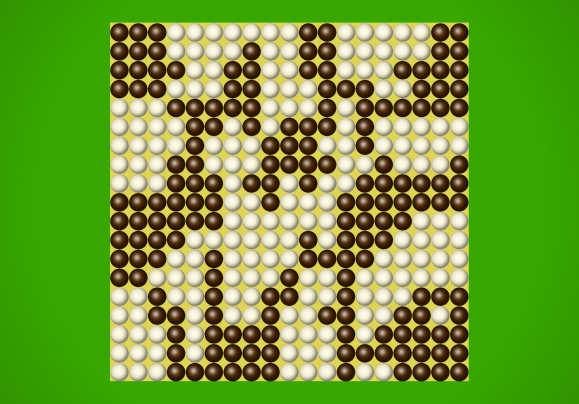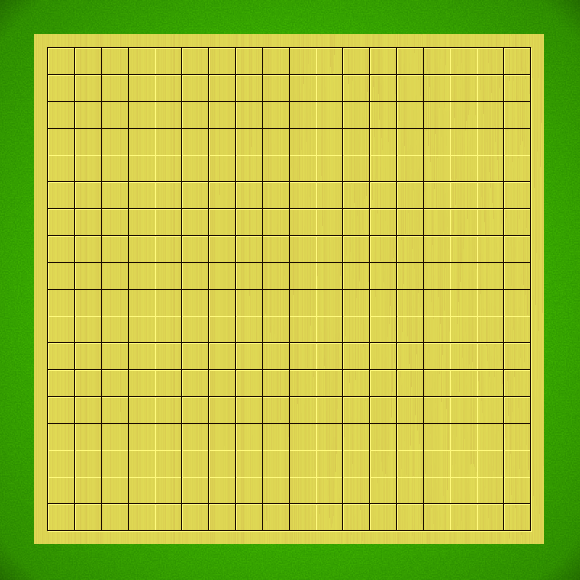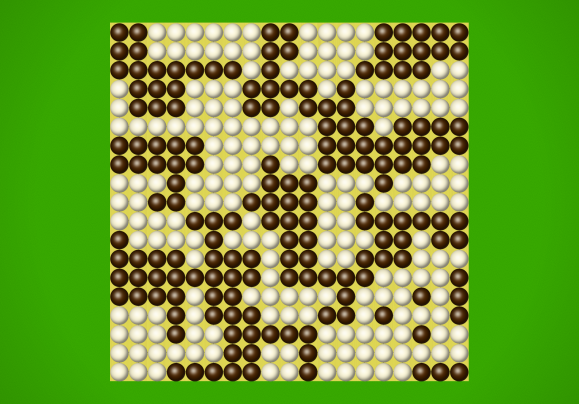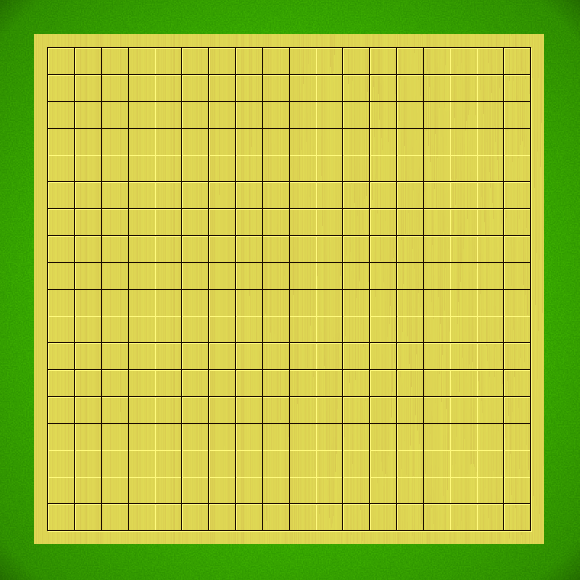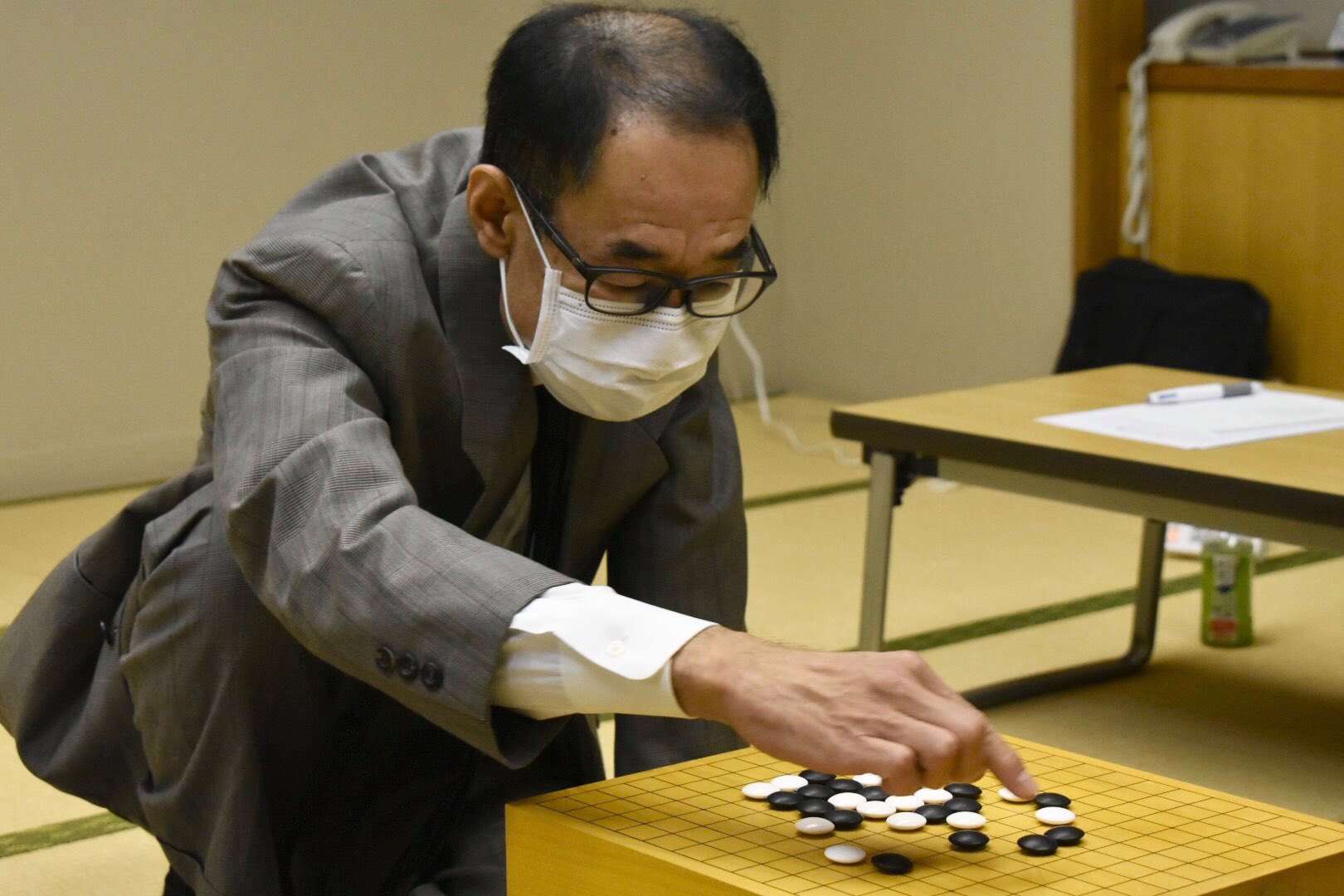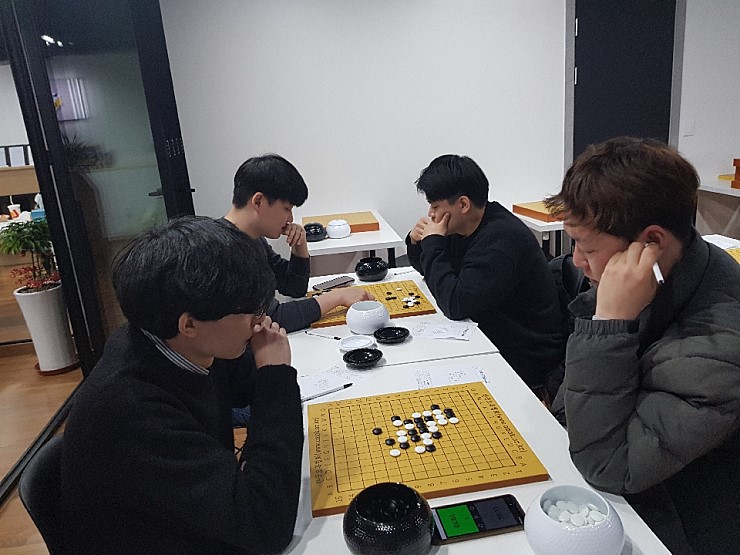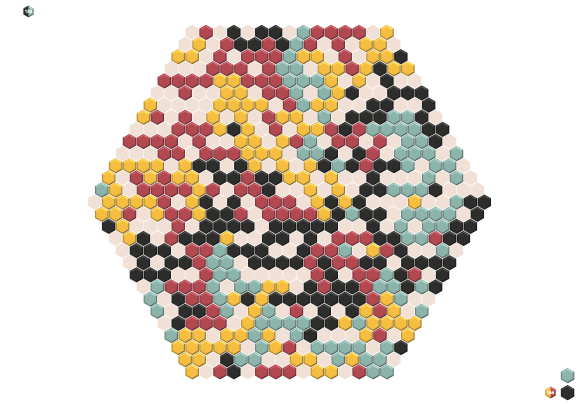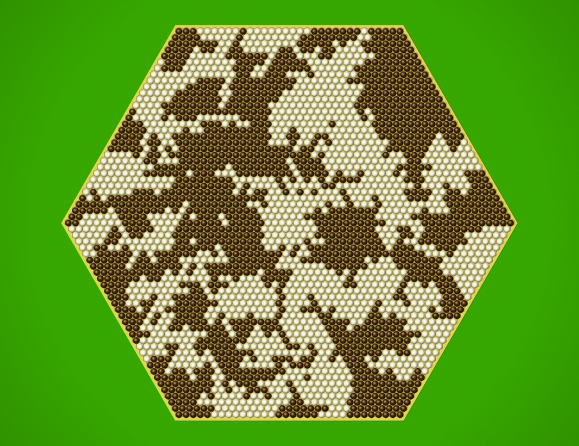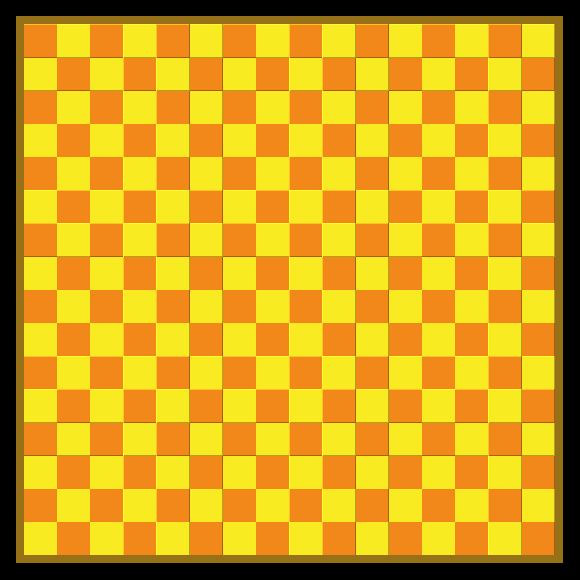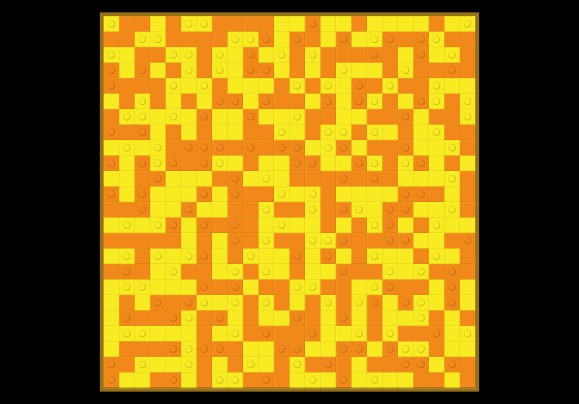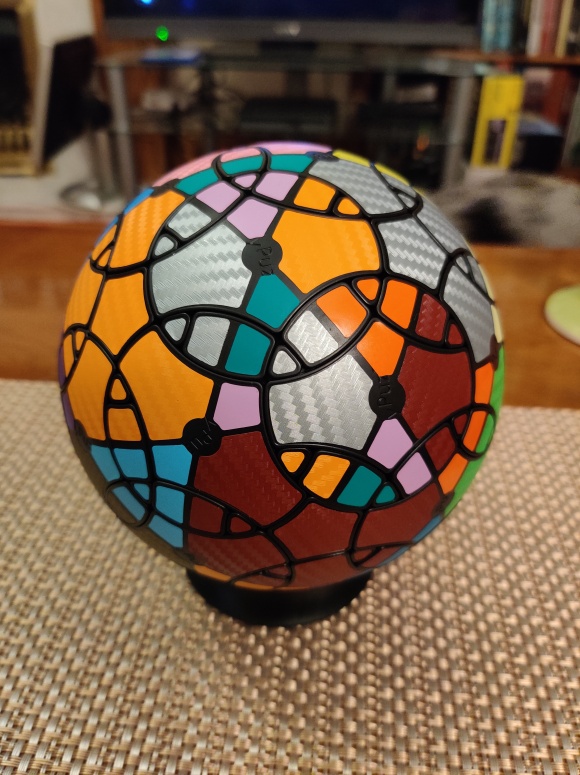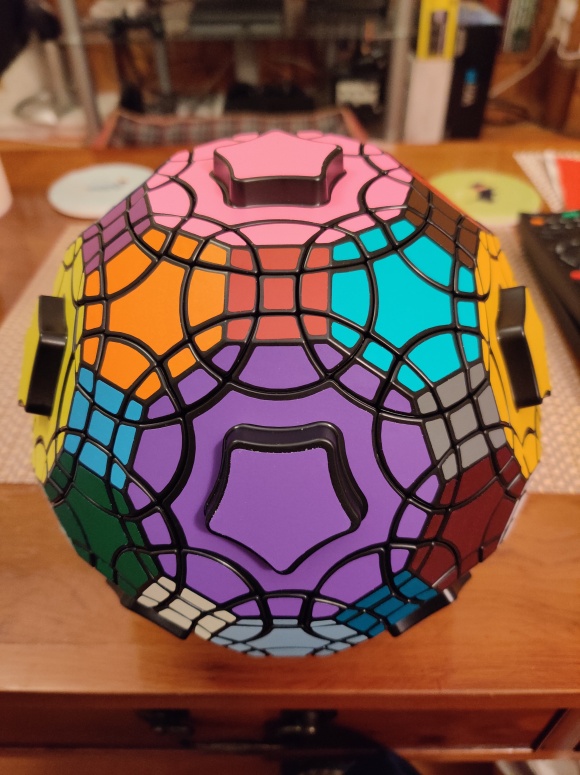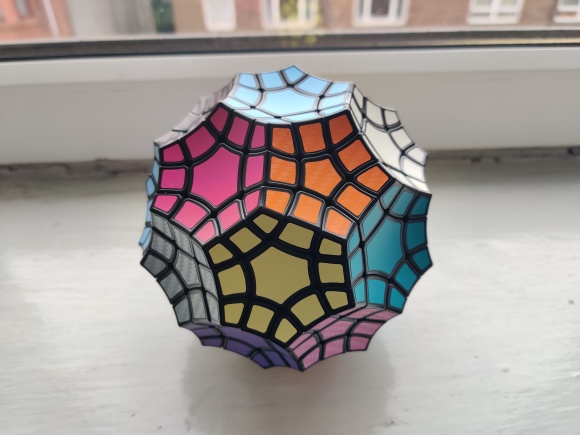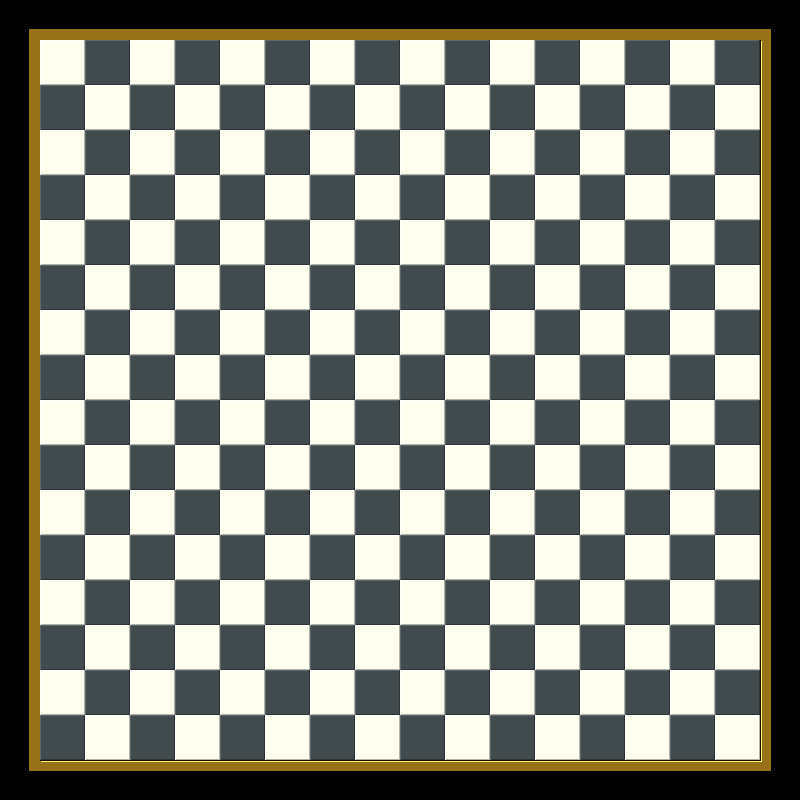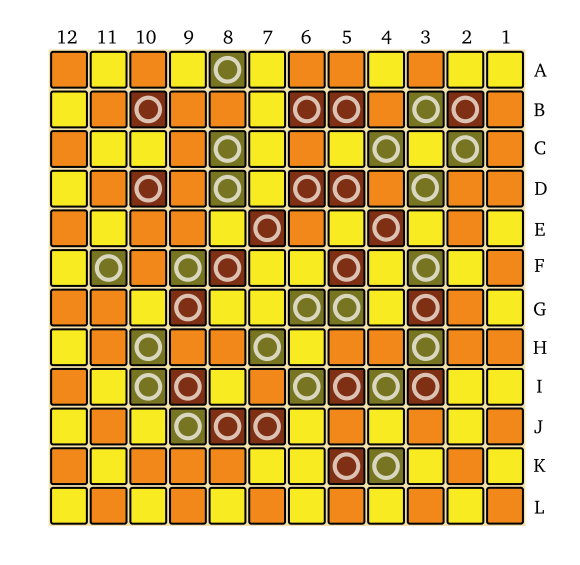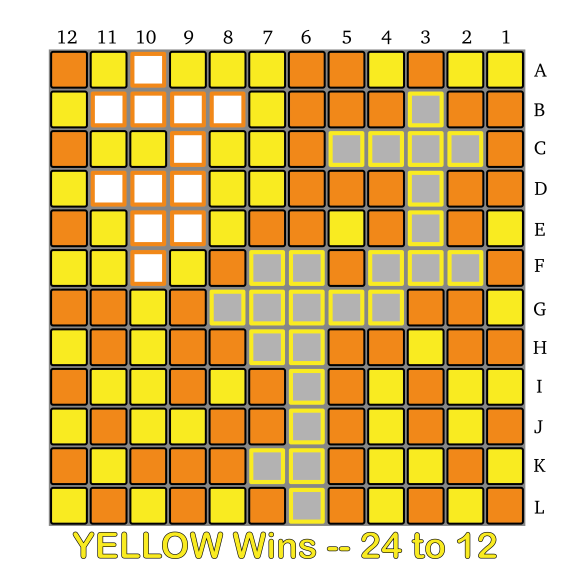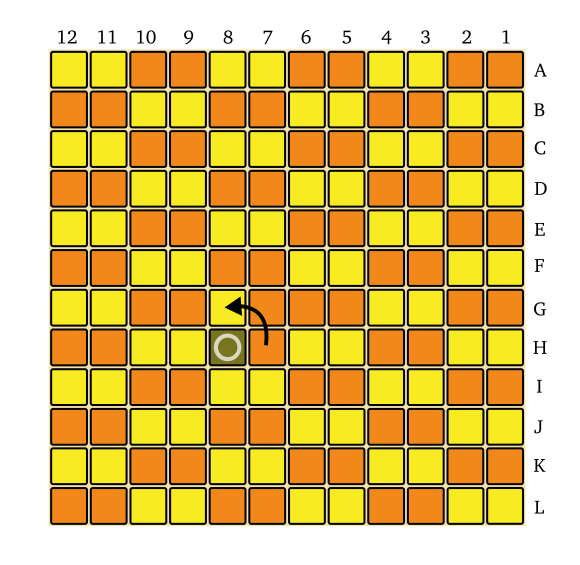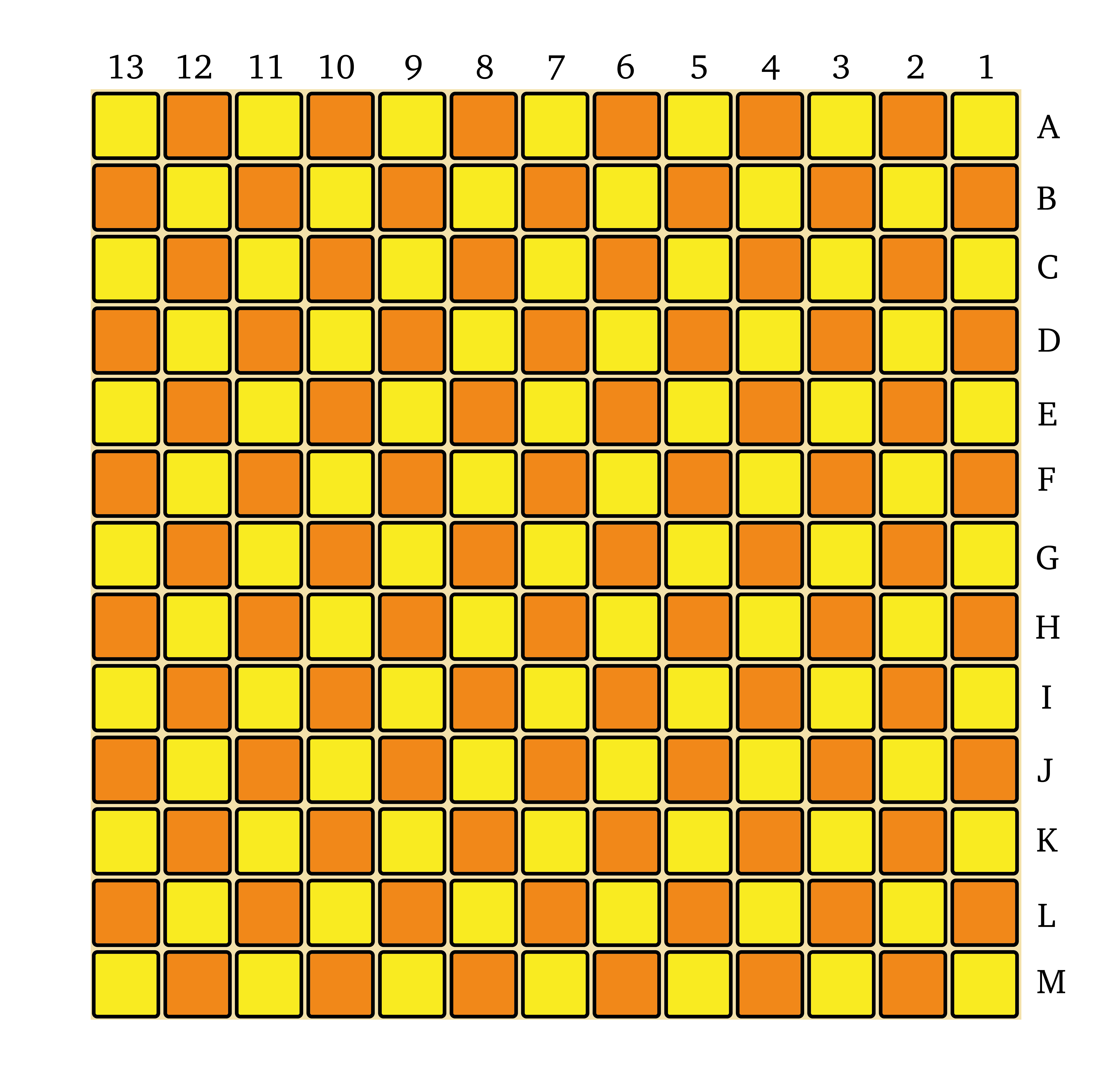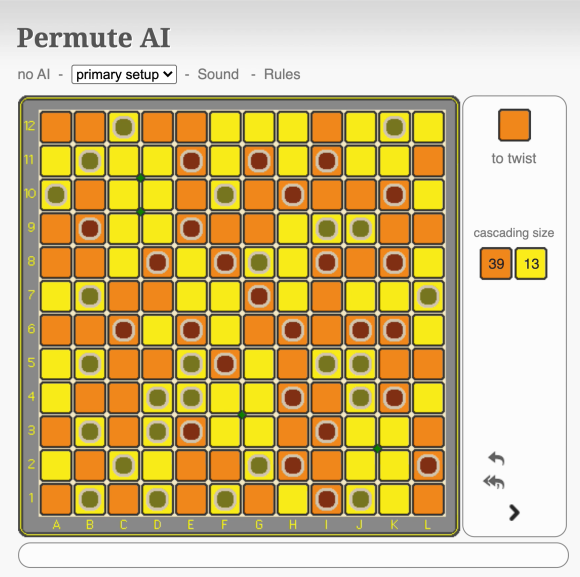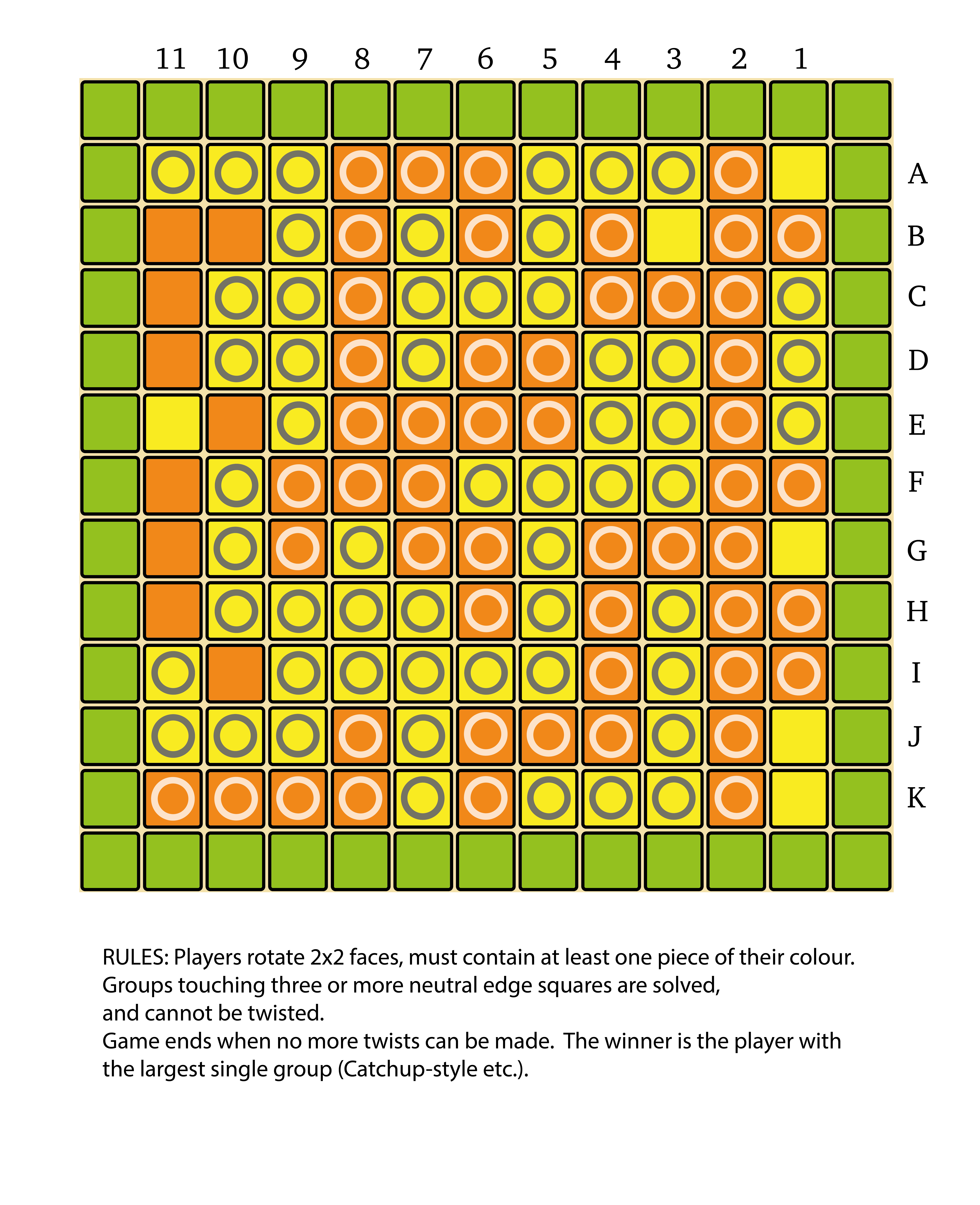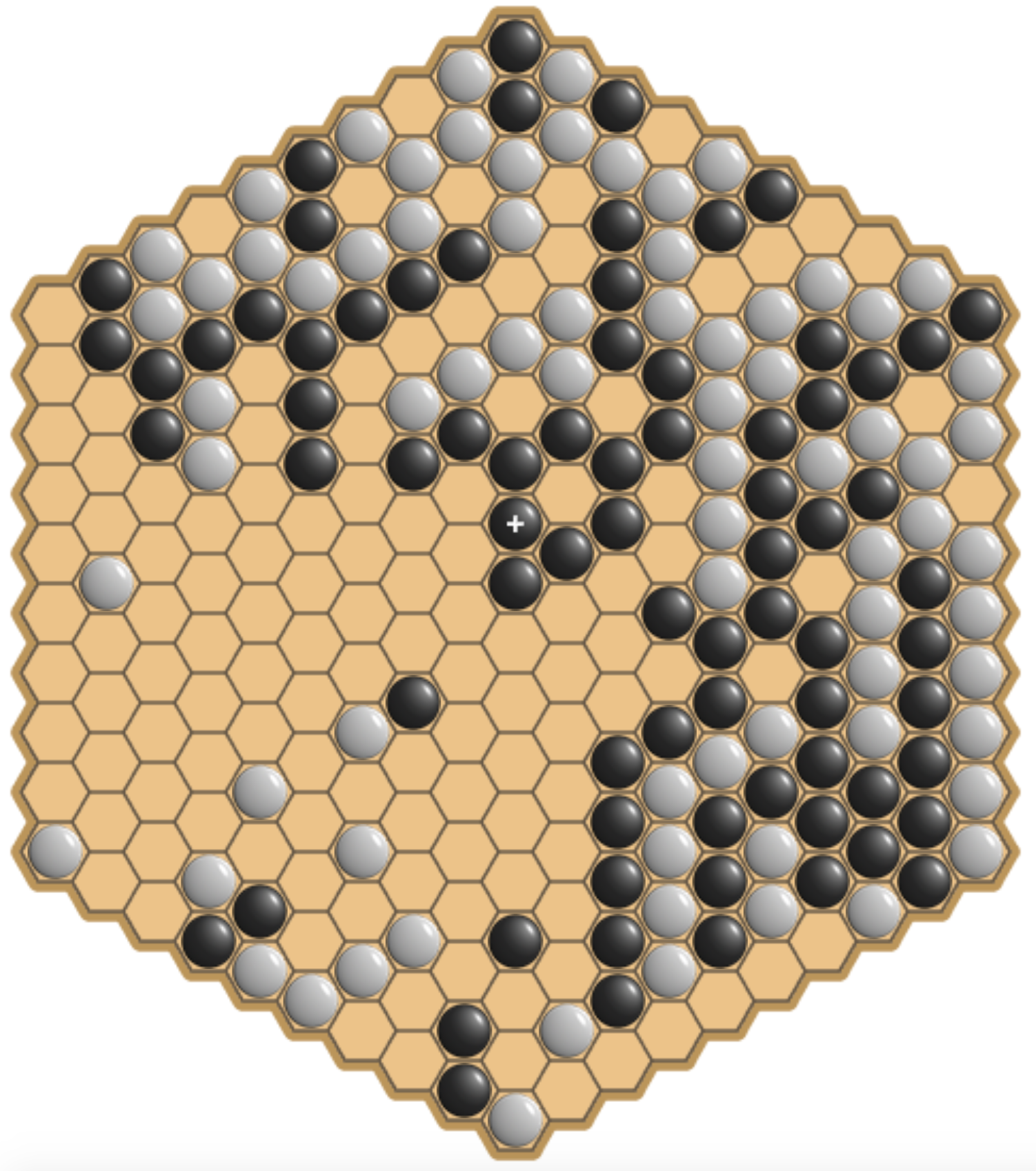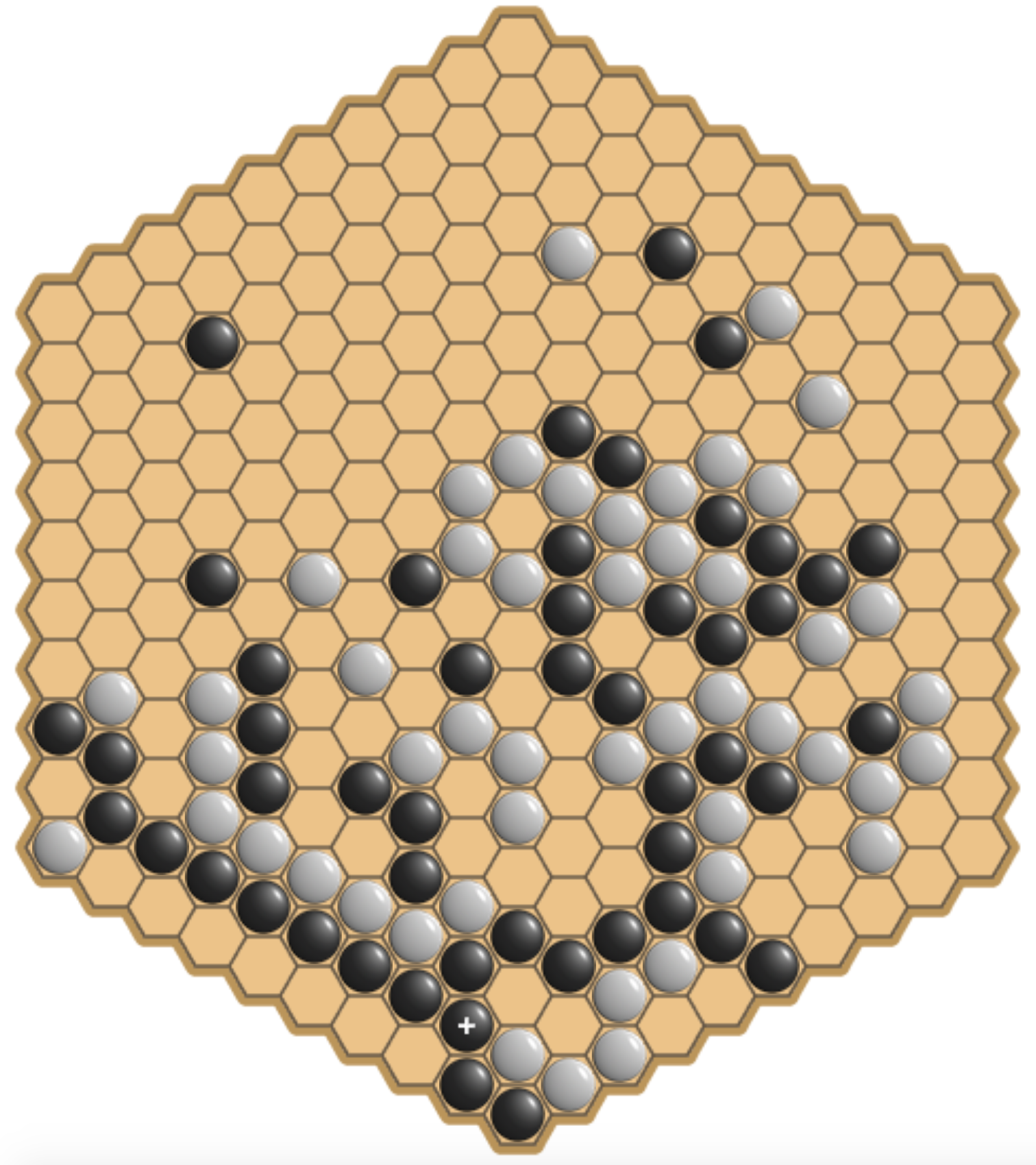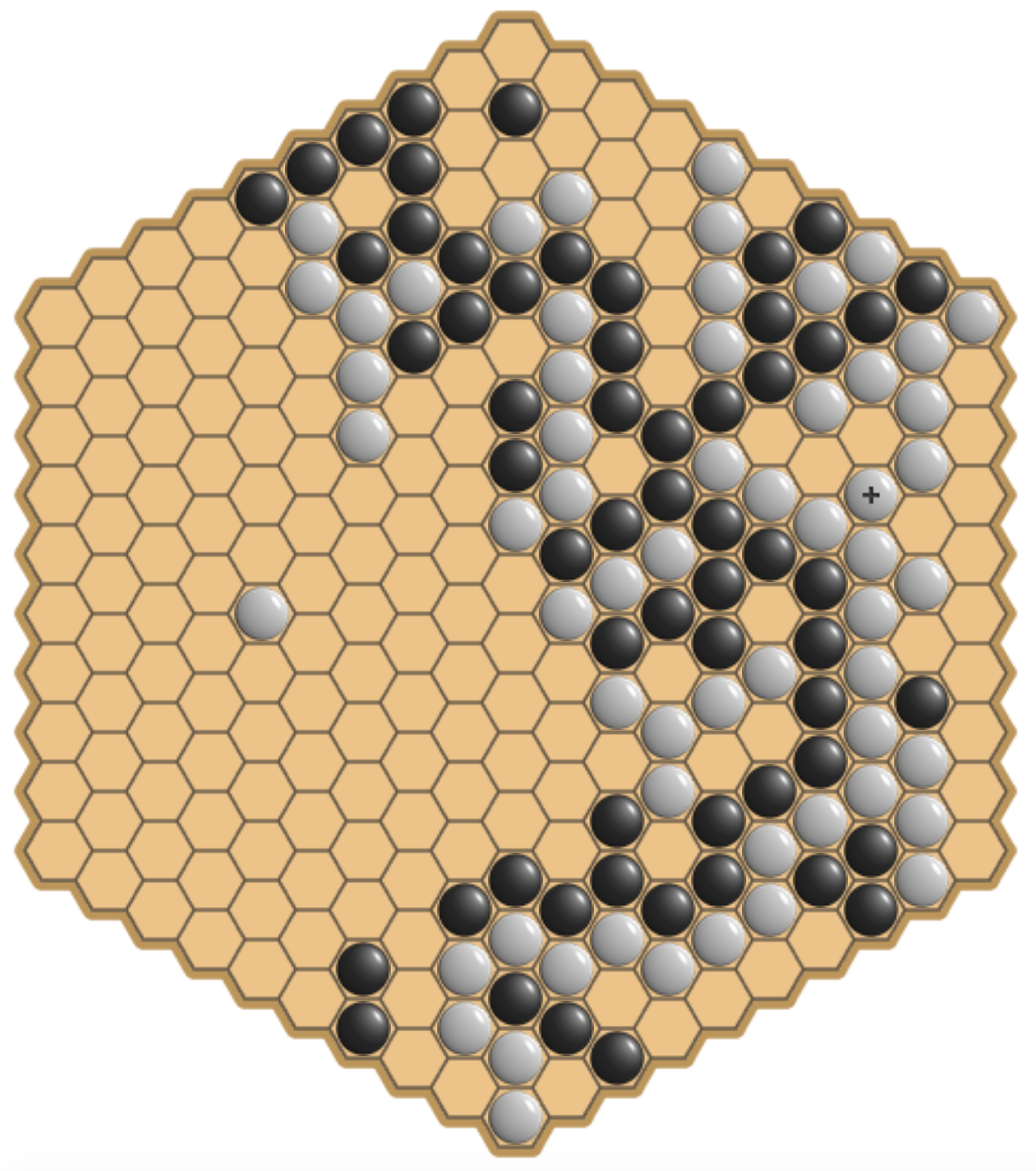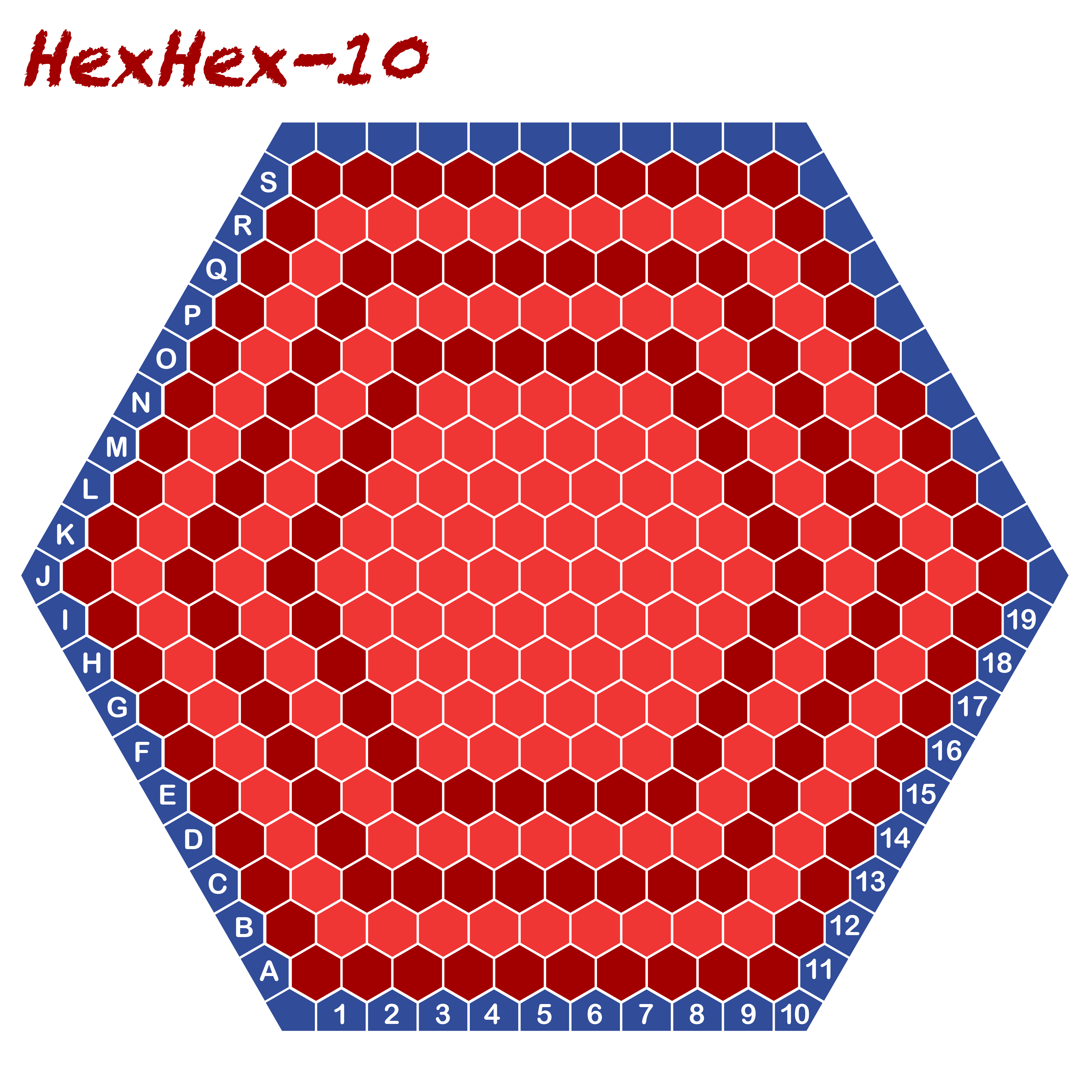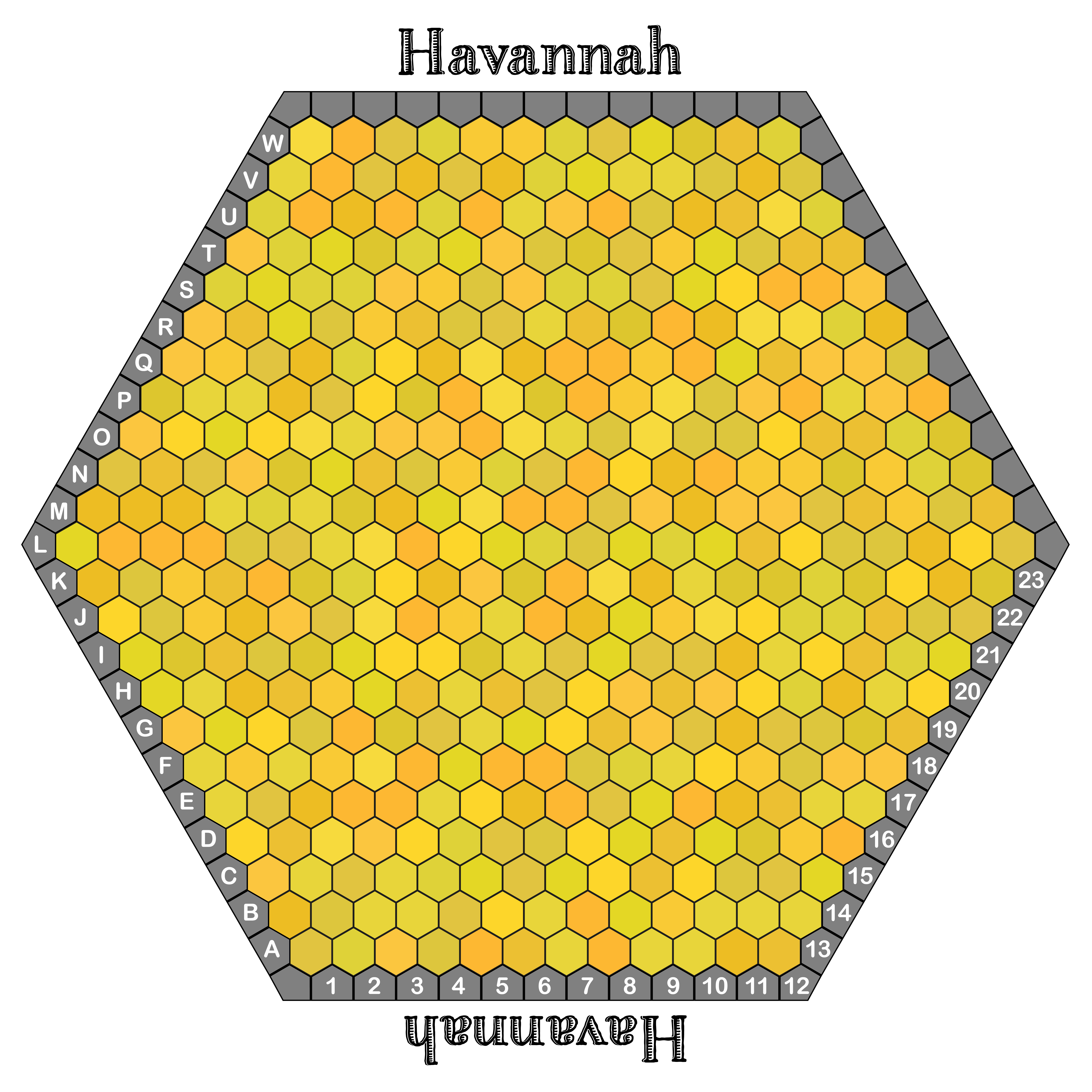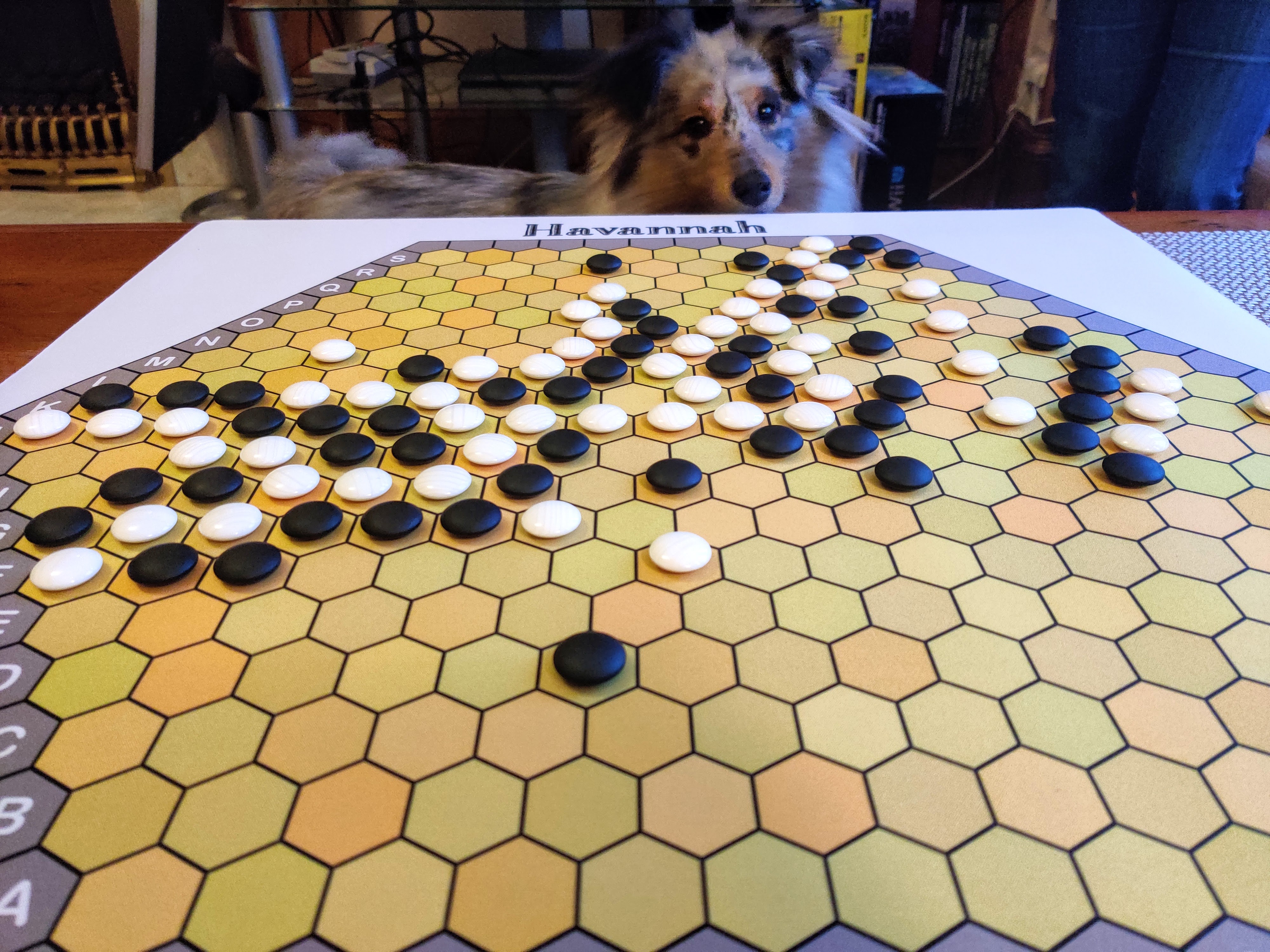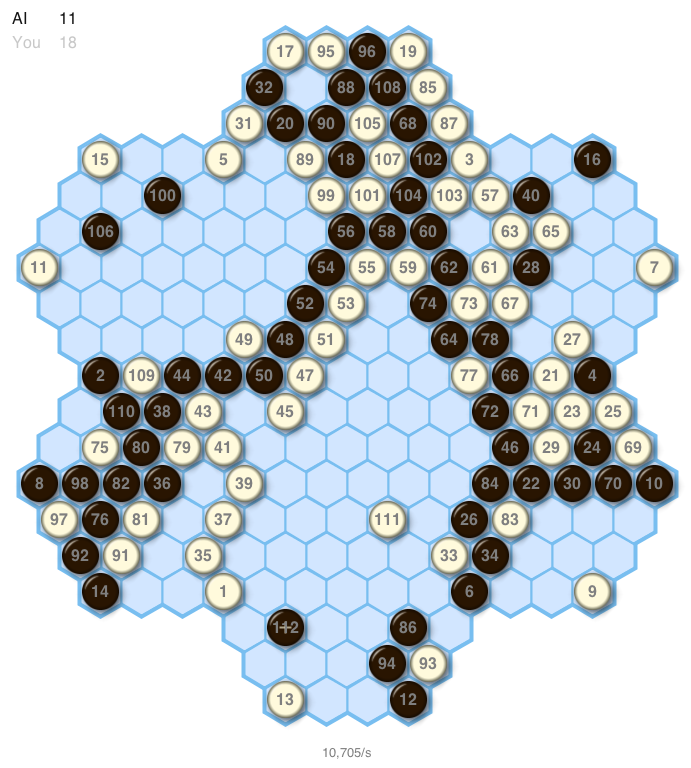UPDATE 6 Feb 2022 — Altered the last section to cover a more general list of games that aren’t on MindSports but could be, and added reviews of Gomoku and Renju. I’ve become fond of the n-in-a-row genre of games, so often maligned on the BGG forums, and these are the most classical games of that type. Also made a minor update to the Russian Checkers review.
UPDATE 6 Nov 2021 — Oust review updated, thanks to finally having a breakthrough!
Christian Freeling’s MindSports site is an essential destination if you want to play some good abstract strategy games. Christian’s own games take centre stage, of course, but numerous other games, both traditional and modern, are also featured.
During the pandemic I’ve taken the time to try out most of the games on MindSports, either against AI or using my collection of various printed boards. I was keeping my impressions in a little text file, mainly as a reminder of what to focus on in future blog posts, but have decided to put them up here in case they might help anyone looking for something to play but perhaps lacking the time to try everything until they find a hit.
Before I start I’m going to do something I wish other reviewers did, which is provide a summary of my general perspectives on games. Hopefully this will give you an idea of where I’m coming from, and will help you interpret my mini-reviews in that light.
- I value games with tradition, that have survived centuries of scrutiny, and that have a culture that has grown around them. However, I also love experimenting with new rules, and with variants of existing games. So in that sense I probably would annoy both the traditionalists and the cult-of-the-new types.
- Simple rules are nice, but as a regular player of very complex board games, I tend not to consider rules simplicity a particularly important factor in my evaluations of games. A good game is good regardless of how long the rules document happens to be.
- I have dabbled in game design but above all I’m a player. With that in mind I’m trying to avoid terms like ‘arbitrariness’ or ‘inelegance’, which are ill-defined terms that relate to mostly to rulesets and not gameplay.
And my scoring system, which uses the entire 0-10 scale:
- 0-2/10: I do not like this.
- 3-4/10: There are other similar, and better options available.
- 5-6/10: Good but not earth-shattering. Worth a try if you like that sort of thing.
- 7-8/10: Very good games that deserve your attention, even if you’re not normally into the genre.
- 9-10/10: Games that are either modern classics or traditional classics. Potential lifestyle games.
While I’m here, a disclaimer: these opinions are intentionally brief, to-the-point, and somewhat flippant. I don’t claim any particular authority here, so do yourself a favour and don’t take these overly seriously!
With that out of the way, let’s start with the games in The Arena.
The Arena
Christian’s six essential games
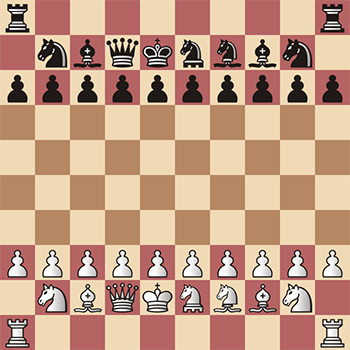
Grand Chess — Christian’s 10×10 Chess variant adding the Cardinal (Bishop + Knight) and Marshal (Rook + Knight) to the traditional lineup. On the whole this is a decent variant, but I have some issues with this game — the Cardinal/Marshal were first used by Pietro Carrera in 1617 and at this point are not very exciting; the initial position allows Marshals to be traded off too easily; the removal of castling is unnecessary in my opinion; the presence of three power-pieces of similar value dilutes the excitement of the game somewhat; and the piece density is too low for my taste, making for a big game that doesn’t actually expand Chess’ strategic/tactical landscape as much as I would like. What really bugs me is the promotion rule, which needlessly punishes early promotions and leads to the awkward rule forcing Pawns to remain in suspended animation if no captured pieces are available. I don’t like that rule in the historical variants that include it, and I don’t like it here either; just let me promote stuff, promoting stuff is fun! Honestly I would probably score this game higher, except that in its wake this promotion rule appears to have become more popular, which is a problem for me. In any case, Grand Chess is fun but there are other 10×10 variants I prefer over this one, and I still plan to feature some of these in a future post eventually (a recent favourite of mine is Expanded Chess). 4/10.

Dameo — Christian’s highly-regarded Draughts variant, often touted as a replacement for 10×10 International Draughts. Unfortunately, this game doesn’t quite work for me. The linear movement aspect feels out of place in a Draughts game, and the kings are a bit too strong for my taste. Various people have told me I’m wrong about this, but I can’t shake the impression that breakthrough is the critical factor in this game, and that getting a king first is a very strong indication that player will win. I can, however, see why people like this game, so I give it a good score on that basis; certainly opening play will be varied, and the draw rate is low. Personally I’d rather play Croda or Turkish Draughts though. 6/10.

Emergo — Here Christian boils down column checkers variants like Bashni and Stappeldammen to their essentials. The result is a frantic tactical game characterised by a somewhat confusing placement phase, followed by a violent explosion of captures in all different directions. The game is most definitely unique and at times feels brilliant, but I’m not much for placement phases in Draughts (or Chess, for that matter), and I do find myself missing the incessant forward motion inherent in Bashni and Stappeldammen. Definitely worth a go if you haven’t tried it. If I can ever get past the placement aspect, I feel this game could become a favourite of mine. 7/10.
Sygo — A Go variant that uses the Symple move protocol combined with Othello-style toggle-capture. I started out a bit skeptical of this game, given my love for Go itself; most Go variants are a fun distraction at best. Sygo however does have a distinct personality, and the Symple protocol is a slice of genius. As Go variants go, it’s better than most, but given the choice I’ll take Symple every time. 7/10.
-
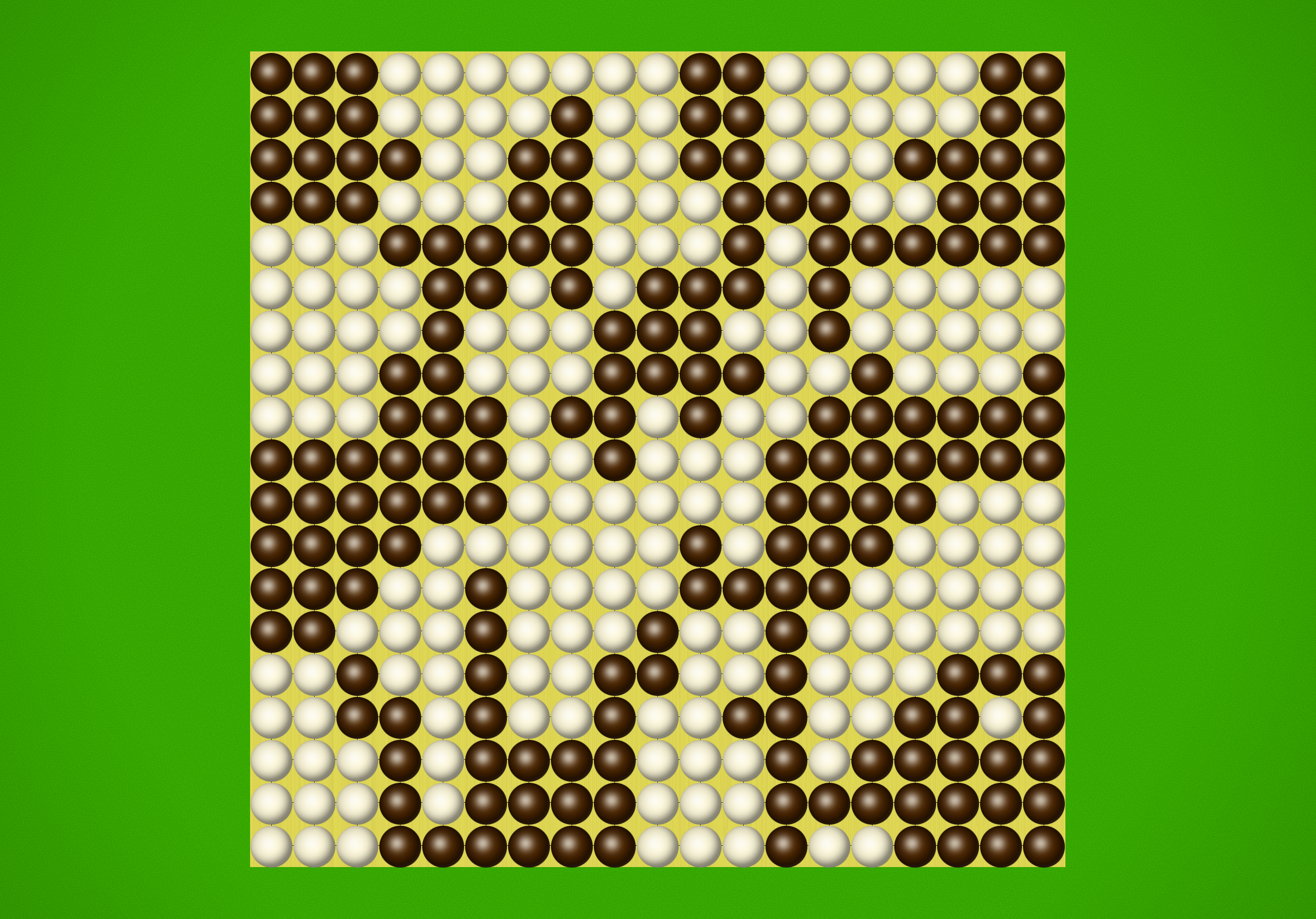
-
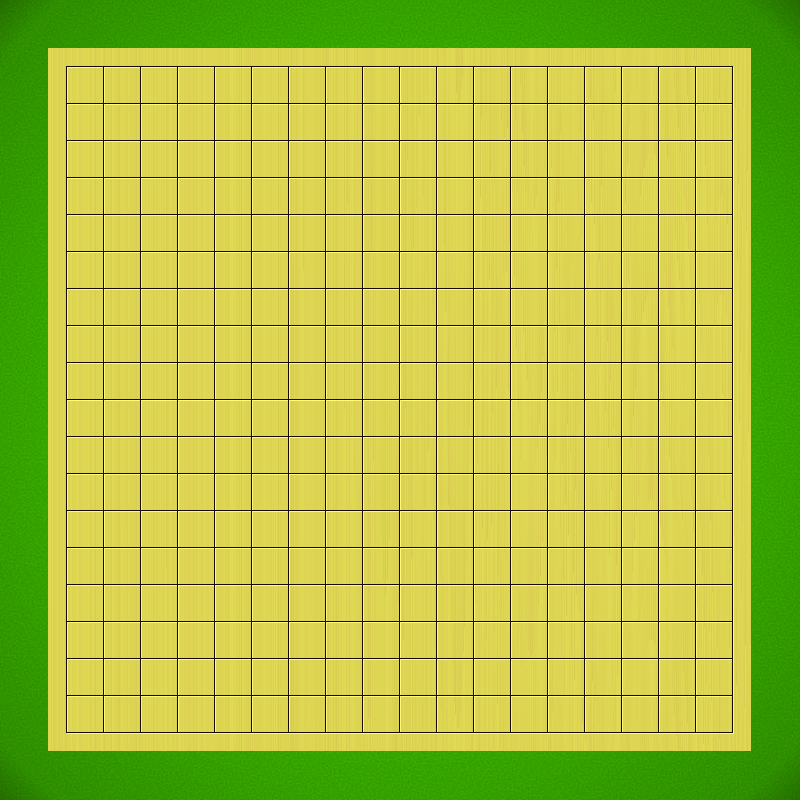
Symple — Formidable. Once I sunk my teeth into this game I was blown away by how singularly unique it feels. In Symple one can either place a single stone on its own to start a new group, or grow every group of yours on the board by one stone; the goal incentivises building small numbers of large groups of stones. The game creates a feeling of constant tension that builds until the endgame, where precise calculation is required to squeeze out the last few points, or to force your opponent into bad placements. Symple is one of the most remarkable and exciting discoveries to be found in modern abstract gaming, in my opinion. 10/10. (read more here)
Storisende — An extremely unusual game of territory, featuring pieces that move and split, and walls that form, and there’s just a lot going on here. I’m not sure I can really rate this game properly, as I simply don’t understand it. Christian has made various valiant efforts to explain this game, but I still find it confusing. I trust his judgment, generally speaking, so I believe something interesting must be happening here, but I just can’t find it yet. Note that Christian has written quite a lot about this game and its strategic complexities, with another article forthcoming soon; I plan to study these articles and revisit the game again in the future. 5/10.
The Arena: The Other Seventeen Freeling Games

Yari Shogi — A 7×9 Shogi variant that uses pieces with lots of Lance-like forward movement. Any Shogi variant is a tough sell for me, because the historical variants are so incredibly interesting. In contrast to something like Tori Shogi or Wa Shogi, Yari feels a bit pedestrian. Also, only one piece type can move backward at all, meaning many more games of Yari will end in an impasse as compared to standard Shogi, as the King will be very safe from attack if it enters the opponent’s camp. I also admit to a certain dislike for attempts to ‘Westernise’ Shogi; Shogi is a Japanese game made by Japanese people, and it bothers me that we so often try to strip its Japanese-ness away, rather than meet the game on its own terms. 4/10.
Dragonfly — This game is reasonably fun, but if I’m going to play a 7×7 game with drops I’ll stick with Tori Shogi. Dragonfly also has a hovering unpromotable Pawn thing that’s similar to the promotion rule I dislike in Grand Chess, and the Pawns can’t be dropped, which diminishes the excitement somewhat. I understand why that rule exists in this particular game, but Christian’s claim that Chess Pawns aren’t suitable for drops is odd to me — they work perfectly well in Crazyhouse, Bughouse, Chessgi, etc. 3/10.
Chess+ — I appreciate the design goal of this game, which was to create a version of Chess which eliminated opening theory without requiring some external list of starting positions like Chess960. Unfortunately it doesn’t work that well, in my opinion. The opening protocol adds significant cognitive load for the new player. Messing up is very easy, and early losses can happen because the long-range power of the Chess army makes it relatively easy to punish bad placements quickly. If you want to play Chess with placement, I recommend the traditional Burmese variant Sittuyin; this game works better, in my opinion, as the pieces are weaker and bad placements are less immediately dangerous thanks to the fixed Pawn structure. 4/10.
Chad, Rotary — I haven’t played these.
Hexdame — A direct translation of International Draughts to the hex board. Quite enjoyable, although a lot of the play seems to bunch up around the edges; granted, that happens in other Draughts variants too, but I notice it more here for some reason. The tactics are enjoyable, and I wouldn’t turn down a game of this, but it’s perhaps a bit *too* tactical. 6/10.
Bushka — A Draughts-adjacent game inspired by the classic Fanorona. Here pieces capture by approach rather than by leaping. This game also originated the linear movement mechanic which made its way into Dameo. The idea is intriguing, but in actual play I find it a bit confusing. The games I’ve played also ended surprisingly quickly, which was a bit disconcerting given the size of the board and the number of pieces. Colour me skeptical, but interested to learn more. 6/10.
Pit of Pillars — haven’t played this yet.
Io — An excellent showcase for the under-appreciated one-bound, one-free opening protocol. Io is an Othello variant that starts with a placement phase, but the innovative one-bound, one-free procedure ensures that the pieces of both sides are placed in interesting ways and tends to create balanced positions for the subsequent capture-fest. A very good game that deserves more attention. 8/10.
Phalanx — This game has several elements not usually seen in combination, bringing together placement, movement, capture, movement of whole groups, all in service of a territorial goal. The result is complex and intriguing. I’m intrigued by the capture mechanic, which ends up creating impassible walls around the board that gradually constrict and focus play until the inevitable conclusion. I can’t pretend to have a good grasp on this game yet, but so far I like what I see. 8/10.
Mu Velox — This game scares me, so I haven’t tried it yet.
Inertia — This game is a rare example of the unification genre, in which players strive to be the first to bring all their pieces together into a single connected group. While reminiscent of the venerable Lines of Action, Inertia feels quite different due to the variable opening position produced by the one-bound, one-free opening protocol, and the movement mechanics which are easier to grasp than in LoA. Enjoyable. 7/10.
KnightVision — This very recent creation melds the classic goal and rhombic board of Hex with a focus on a hexagonal version of the Knight’s leap. Christian’s pitch says ‘it adds drama to an incredibly deep game without affecting its depth’, but I slightly disagree; the Knight’s-move placement pushes more locality on a game that thrives on global strategy. Having said that, the chucking of axes is very fun, and the game overall is a good experience. But if someone breaks out a Hex board I’m going to play Hex on it over this every time. 7/10.

Havannah — I respect Christian enormously, but his decision to exclude Havannah from his ‘games that matter’ list is forever baffling to me. A classic by any measure, Havannah is easy to understand yet blessed with bottomless depth. The multiple goals create a sense of limitlessness that few games can muster. I can understand the impulse to push his fans toward his later games, and certainly he’s produced many great games after Havannah. But equally, there’s nothing wrong with getting it right the first time. Brilliant. 10/10. (read more here)
Starweb — A game of connecting corner cells together, with point scores growing rapidly as groups encompass more and more corners. A beautiful melding of connective and territorial impulses, this game has been a favourite of mine since I first heard of it. I continue to hope more players will discover the strategic delicacy that emerges on this unique star-shaped board. I like this game so much that I asked Stephen to add even bigger boards to Ai Ai, so that I could immerse myself in the game for even longer sessions (in the collage of sample games above, the top left one is playing on the standard size-10 board, the others are on the bigger size-11, 12 and 13 boards). Essential. 10/10. (read more here)
Scware — Here we find a noble attempt to combine the Symple protocol with a connective goal. There’s fun to be had here; however, the restrictions in place feel rather *too* restrictive to me in the context of a connection goal. In the sub-genre of connective Symplistic games, I think SympleHex just squeaks past this one. 6/10.
The Glass Bead Game — I’m not much of a mancala player, so I haven’t played this one yet.
The Arena: Other Contributions

Chess — Still the greatest source of drama available on an 8×8 square grid. This game has captured the gaming world’s imagination to such an extent that it has birthed an entire global genre of checkmate-based games and variants. I learned this game in my youth, like many people, but only truly learned to appreciate it in my old age. Now it’s a fixture of my daily life. 10/10.

Shogi — Possibly the greatest game ever invented by humans. The rules, piece movements, and aesthetics marry perfectly to create a glorious experience — a game of delicate beauty and intricate manoeuvre, combined with vicious tactics and constant aggression. I love everything about this game, and my Shogi board and traditional pieces with Minase calligraphy (pictured above) are perhaps my favourite gaming item in my home. If I could give this 11/10, I would. You know what, I’m going to, this is my blog, dammit! 11/10. (read more here)

10×10 Draughts — As a kid I played Checkers, Anglo-American style, and like many other kids I played it incorrectly (with optional captures instead of mandatory). Years later I found out that A) Checkers is unbelievably better when you play it properly, and B) a 10×10 version exists with long-range kings and backwards captures! Boy did I feel silly once I realised I’d been playing Checkers fundamentally wrong all that time.
Incidentally, since that embarrassing realisation I’ve been somewhat relieved to find that apparently a huge number of other people also never played Checkers correctly. Here are a few reviews of the app All-in-One Checkers on Android:

So, on the plus side, at least I figured out my mistake eventually! I feel for all these people who never had that moment, though. So far as I’m aware there’s not any established Checkers/Draughts variants out there with optional capture, and thank goodness for that, because from that rule comes all kinds of tactical excitement.
Anyway, the discovery of 10×10 International Draughts was quite a moment in my gaming life. I fell in love with this glorious game of spectacular combinations. Christian often criticises the game for being drawish at the high levels of play, and while that’s completely true, I’m not good enough for that to be a major problem. 10/10.
Constitutional Draughts — This variant of 10×10 Draughts reduces drawishness by restricting kings, forcing them to avoid crossing squares where they could be captured. For me this substantially screws up my endgame tactical vision, and feels more awkward than Killer Draughts’ simple restriction, which also has predecessors in historical Draughts variants. The constitutional restriction reminds me of Caissa Britannia, a Chess variant invented in 2003, which is where I first saw this concept; perhaps unfairly, Constitutional Draughts feels weirdly un-Draughts-like to me as a result. 6/10.

Frisian Draughts — Frisian Draughts massively expands the tactical craziness of 10×10 Draughts by allowing pieces and kings to capture orthogonally as well as diagonally. The result is very hectic, with spectacular combos appearing frequently, and often in surprising ways. Initially I found this game too confusing, but recently it finally clicked; I played a game against a strong AI (on Lidraughts), and suddenly I found myself seeing patterns and creating robust structures that I had never thought of before. I’m now convinced this is an excellent take on Draughts, and the tiny 5% draw rate in competitive play is a great bonus as well. Download this 59 page guide for a great intro to the game. 9/10.

Stappeldammen — 10×10 Draughts extended into verticality. Like Bashni or Emergo, here pieces build stacks as they capture, and subsequent captures can re-expose stacks, leading to frequent changes in ownership. A unique element here as that there is no promotion, meaning stacks can get stuck on the last rank until freed by the appearance of an adjacent capture target. This seems weird at first, but I agree with Christian that it adds an interesting strategic wrinkle. Bashni is more fun though. 7/10.

Oust — After numerous attempts, I finally had a breakthrough moment with this game. Oust is a game with the unusual property that each game both starts and ends with an empty board. Players may either place a stone anywhere, so long as it’s not adjacent to their own stones, or grow one of their groups on the board in order to capture an adjacent opposing group of lesser size. The winner is the player who completely annihilates his opponent’s pieces. Critically, each capturing move must be followed by another placement, which means that wins can appear in sudden and shocking fashion as one capture chains into another. I found the game utterly impenetrable at first, but at last I figured out some basic strategic principles and could begin to place my pieces on the board in some sort of structured way. Now I find the game innovative and surprising, rather than confusing and opaque. However, I probably played about 30 games to reach this point, so be aware that you may not ‘get it’ right away. Whether it’s worth it to you to face that learning curve is another question; in any case I would say the game deserves a few tries so you can judge that for yourself. 7/10.
Many people praise this odd game of placement and elimination, but I find it utterly baffling. Some other games have boggled me in the past, but something kept me motivated to try again until a lightbulb eventually went off. Here, for whatever reason, that didn’t happen for me. I’ve no doubt this will be intriguing for others, and the uniqueness is obvious, but for me it’s an alienating, confusing experience. Nick Bentley’s Bug is similar to Oust, and that game confuses the heck out of me too! I played both games a bunch of times and never got the sense I was unlocking any additional understanding or improving my play in any meaningful way. 3/10.

A treasured part of my gaming collection — a Go board made from Japanese Kaya, with the lines drawn via a sword dipped in black laquer (yes, really). The stones are the traditional slate and clamshell.
Go — The quintessential game of territory, one of the oldest games on the planet, and perhaps the most revered. What can I say about this game that hasn’t already been said? Go is staggeringly deep, tactically complex and strategically varied, and capable of making hours fly by as you end up completely absorbed in the infinite possibilities in front of you on that 19×19 grid. Many people praise it for its simple rules, but I tend to stay away from that characterisation; in theory, the rules are simple, but the learning curve is steep, so it feels anything but simple as a beginner. Go can take a while to reveal its character and richness to the newbie; beginners are often urged to dive in and lose 100 games as quickly as possible, as it takes a lot of bitter experience to grasp the basic concepts. But if Go does end up hitting the mark for you, you may well find it takes over your gaming life. 10/10. (read more here)

Rosette — Go on a hex board has been a goal for many a designer, and Rosette makes it work through a wonderfully simple mechanism: if a player occupies all six points of a single hexagon, that group of stones cannot be captured, ever. In a single stroke this rule compensates for the reduced number of liberties on the hex board, and allows a Go-like intricacy to flourish on the hexagonal grid. Yes, I know it’s played on the intersections so it’s actually the dual of the hex board, but it’s hexagonal enough for me, and a great game besides! 8/10.

Stigmergy — This game started life as a Tumbleweed variant, and has subsequently branched off into its own thing. I actually came up with the name, which apparently everyone hates, but as yet no one has come up with a better one. Anyway, Stigmergy is a good game, substantially easier to play OTB than Tumbleweed, but also feels a bit more sterile. I’ve yet to play the Stigmergised connection game that recently appeared on MindSports, but I suspect that might suit me a little better. 7/10.

Ready to play a quick game of Ayu on my 9×9 Go board.
Ayu — Another example of the underserved unification genre, Ayu (‘attach your units’) forces the game toward inevitable unification via an easy-to-understand movement restriction. I’m very bad at this game but I still love it, which in my view is a clear indication that a game has something special about it. Strongly recommended. 9/10.

Playing 19×19 Hex on a board of my own design.
Hex — The game which looms so large in the world of modern abstract games that any connection game is inevitably compared to it. Hex is incredibly simple to explain — take turns placing a single stone of your colour, win by being the first to connect your coloured sides with a continuous line of stones — but in play one finds endless intricacy and an innate focus on global strategy. The more I play Hex, the more I admire it, and unlike some other games I admire, I actually thoroughly *enjoy* it as well. I strongly recommend starting on 13×13 boards, then progress to 15×15 and 19×19, where the territorial aspects become significantly more important. A must play. 10/10. (read more here)
The Pit
There are many games on this page, so I’m going to simply skip over those I haven’t played, to save some space!
Chess Variants
I like my Chess variants expansive and with unusual pieces, and most of these games don’t hit that mark for me. Loonybird is fun, but divergent pieces are pretty common in Chess variants, so I didn’t stick with it for long.
Chess960 — Christian hates this game, and his complaints about it from a design perspective are reasonable, but as a player I don’t find them to be a problem. FischerRandom/Chess960 had as its goal the elimination of opening theory, and it succeeds admirably at this without much in the way of rules changes, and now with official FIDE backing it’s easily the most important Chess variant on the planet (not the best, but the most impactful). I’d quite like to ditch castling from FRC/960, which is awkwardly implemented in my opinion, but otherwise it’s a simple variant that allows interesting Chess to happen without 20 moves of opening prep needing to happen first. 8/10.

Xiangqi — China’s traditional form of Chess, virtually unchanged over the last 900 years. Played on a larger 9×10 board, yet is more tactical rather than strategic. The feel is substantially different from FIDE Chess, in part because the concept of material value here is much less important than positional advantage. I very much enjoy playing Xiangqi, but I prefer Janggi, which removes the river and allows the Elephants to roam free (plus they have a more interesting move). Xiangqi deserves additional credit for gifting us the wonderful Cannon piece, which is extremely interesting to use and is an excellent addition to numerous large Chess variants (like the superb Shako and its larger relatives Zanzibar, Maasai, Gigachess, and Terachess). The downside for me is the relative lack of Pawn structure and promotion (except for slightly stronger Pawns); however, I must admit the game works fine without these, thanks to the confinement of the King in the palace, which allows checkmate to occur even when little attacking power is left on the board. If you want to learn more about Xiangqi, Jim Png’s excellent XQ in English site has everything you need; do check out his excellent introductory books and translations of ancient Xiangqi texts as well. 8/10.
Games of Annihilation

Turkish Draughts — For some reason, despite having played Checkers in my youth I never considered the idea of an orthogonal version, so seeing this game for the first time was a real eureka moment. In Turkish Draughts, players start with 16 pieces each on the 8×8 board, and men may move one square straight ahead or in either sideways direction; kings move like Rooks in Chess and capture via the long leap. Unlike Draughts, pieces are removed as soon as they are jumped rather than at the end of the sequence, which can allow some spectacularly long capturing sequences. The tactical problem above (White to move and win) is a great example; the final move captures 12 checkers at once! I love this game and play it constantly on my phone, and I feel it should be just as revered as Draughts and Checkers. 10/10.
Armenian Draughts — This variant of Turkish Draughts spices things up by allowing men to move diagonally. This seemingly small change actually completely alters the gameplay, removing the concept of opposition. For fans of Draughts this is worth a try. Kings are strong as in Dameo, but men here are also more mobile, which feels a bit better in my opinion. However, I’m a little unsure about the rules reported in the English-speaking world; in Russian sources, it is said that pieces are removed at the end of a capture sequence, rather than immediately. I’m trying to find Armenian sources to get a definitive answer, but as yet have been unsuccessful. Most of the Russian-language information seems to come from the book Checkers: 60 Unusual Games on a Classic Board by Alexander Pavlovich, so I’m working on obtaining this book. 8/10.

Bashni — The columnar version of Russian Draughts, where captured pieces are continually stacked under the capturer. Stacks can be unveiled again by re-capturing the top piece off a stack, leading to amazingly complex combinations and exciting back-and-forth action. Promoted stacks capture with the long leap, too, adding to the hectic nature of the game. An absolute blast. Abstract Games Magazine featured this game in a number of articles, and included numerous useful tactical and strategic tips, as well as some nice problems like the above (White to move and win). 10/10.

Croda — This ingenious Draughts variant takes Turkish Draughts, replaces the sideways moves of the men with diagonal ones, but keeps capture orthogonal only… then stuffs the 8×8 board with 48 pieces. The result is an action-packed game with lots of opportunities for exciting combinations. Dameo was inspired by this game, but I actually prefer Croda; the lack of linear movement and the weaker kings produces a simpler game that feels more balanced to me. Admittedly the average Croda game will be much longer than a typical Dameo game, but all other things being equal I usually prefer longer games to shorter ones. A viable alternative to 10×10 Draughts, if you’re worried about drawishness. 9/10.
Fanorona — A traditional elimination game that uses contact capture, and that later inspired Freeling’s Bushka (see above). Very fun to play casually, as the action starts immediately, but as with Bushka I find it quite confusing. I like a more subtle opening phase, and as any reader of this blog will know, I always like larger boards. Still, well worth a try! There’s no denying it’s a unique game that’s packed with excitement. 7/10.
Killer Draughts — An attempt to alleviate the drawishness of Draughts, Killer forces kings to stop immediately on the square just beyond the piece it captures at the end of a capturing sequence, but only if that piece was also a king. This simple change, derived from a similar rule in Thai Draughts, allows two kings to win against one in the endgame (as compared to four kings being required in the standard game). The rule is simple to understand, and large endgame tablebases have already been calculated for this variant, making it possible to adjust one’s endgame knowledge through study. In my view, a straightforward and effective option for tightening up the Draughts endgame. 9/10.
Lasca — The famous Chess player Emanuel Lasker invented this game, which is the columnar adaptation of English Draughts (or Straight Checkers, for my American compatriots). Sadly the result is too constrained and dull, lacking all the verve and vitality of Bashni. Still better than a kick in the head, and I imagine this game could be substantially improved if someone with design chops spent some time with it. 5/10.
Loca — This tricky little number flips one’s Draughts expectations around, allowing men to capture like kings. The result is a weird experience, with carnage starting very quickly. I’ve only played this twice, and I don’t think I could possibly take this game seriously, but it was pretty fun. 7/10.
Territory Games
Amazons — This is one of those games that I admire, but don’t actually like playing that much. Players move their Amazons around the board like Chess Queens, blocking off an adjacent square after each move; the last player to move wins. In play the game becomes a territorial battle, and there is ample scope for delicate strategic play. I just find it a bit dull in practice; the interaction between the Amazons is indirect, and slightly unsatisfying for me. An amazing invention and clearly a great game, just not one that suits my temperament. 7/10.

Cannons and Bullets — This clever game allows players to place pieces on vacant hexes, but only if that hex is directly visible to a friendly piece; if a piece is visible to three or more friendlies, you may place a double-stack, which then can be fired as a cannon to capture enemy pieces. I find this game easy to get into and remarkably fun in play; games are quick, generally speaking, but there is scope for some cute tactics. Recommended. 8/10.

Desdemona — This odd combination of Amazons and Othello is actually more fun for me than Amazons itself. The addition of toggle-capture adds some much-needed interactivity to the game that I find enjoyable. Desdemona has been through a few revisions to avoid degenerate play, but the final version works well and is recommended if, like me, you find Amazons just a little bit sterile. 8/10.
HexSygo — One of the few, elite members of the hexagonal-Go-games-that-actually-work club. A straight-up translation of the Sygo rules to the hexagonal board results in a game with Go-like territorial vibes but a very unique tactical feel. I haven’t played this game all that much but it’s on my list to study more deeply. 8/10.
Keil — I don’t like to be this negative, but I really, really dislike Keil. Keil takes Go, known for its minimalistic visuals and high clarity, and transforms it into a game that makes no visual sense, where links between cells and stones are obscure and hard to follow. In essence, in my opinion it takes Go and removes virtually all of the clarity and aesthetic beauty. This is perhaps the only abstract game I’ve tried so far that actually upset me when I attempted to play it. 0/10.

Lotus — I mentioned this game in a previous post as an under-appreciated gem, and I stand by that assessment. The odd board and Othello-style capture give this game a unique impression, and it’s certainly a better use of the Kensington board. Check out the other post for more. 8/10.
MacBeth — Not much to say about this game other than the fact that it’s a translation of Othello to a hexagonal grid, and it works great. I’ve had a few games of this, one of which ended in a last-second victory for me that had all the thrills of a close scrape in its parent game. I liked this enough to program it for Ludii, so clearly I like it a lot. 9/10.

Medusa — Another unusual territory game with an unusual board, Medusa again features in my other post with brief reviews of cool abstracts. Medusa is like Lotus’ big brother, with a more deliberate, strategic feel. Both games make fine use of Rosette’s clever conceit of granting eternal life to hexagonal formations of a single colour. Give it a whirl! 8/10. (read more here)

Othello — This game is of course a classic, present in millions of homes throughout the world, and is particularly popular in Japan. Othello is one of the rare modern-ish abstracts to actually have a robust tournament scene, with regular world championships and ample high-level online opponents available. The flip-flopping capture mechanism can be a bit opaque at first, but Othello is so instantly accessible and fun that it’s easy to break this out with non-gamers and have a good time. My only lament is that the 10×10 version is so hard to find anywhere; I still occasionally trawl Japanese auction sites looking for a copy, and someday I hope to grab one at last. This game often gets denigrated in the abstract community for some reason, but there’s a lot of depth here and it’s absolutely possible to take up Othello as a lifestyle game. 9/10.

Tumbleweed — A rare example of a game birthed on the BGG forums that has gained some kind of community around itself, thanks to the herculean promotional efforts of the creator Mike Zapawa and superfan Alek Erickson. Tumbleweed is a territorial game centred on a line-of-sight placement mechanic and the use of stacks of counters. I initially was excited about this game, as it felt novel while still being comprehensible, but in subsequent play something bugs me about it. I haven’t quite worked out what that is, but I suspect a few factors play into it: it’s hard to justify expending lots of effort on another territory game when I’ve invested so much in Go; OTB play is tough to organise due to the need for hundreds upon hundreds of counters; and large board sizes produce a much more interesting game, IMO, but most players prefer smaller sizes. However, it’s definitely a significant and enjoyable game and I would recommend trying it; plus it has a tournament scene, which is a rare and precious thing. 8/10. (read more here)
Largest Group Cascading

My order-9 Catchup board design.
Catchup — Easily the best game made by Nick Bentley, which regularly gets criticised by the BGG abstracts community, and Nick himself, because of the need to keep score. This is unjust in my view, as the Catchup mechanism, in which players may place 3 stones in a turn instead of 2 if the opponent matches or exceeds their current score, is a brilliant innovation that gives this game an immediately apparent uniqueness and flair. For a very long time it was only played on order-5 hex boards, which means games were so short that there was not much room for strategy. Despite my love for this game I don’t enjoy playing it on the order-5 board. Thankfully, now people seem to be playing on order-7 boards more often, which is a significant improvement. I printed an order-9 board for myself, and I sometimes play at even larger sizes using Ai Ai. In any case, I consider this one of the finest modern abstracts, and in a more sensible world it would have been published and would be getting played by millions of adoring fans. 10/10. (read more here)

Migong — Here’s part of a post I wrote on this game in the BGG abstracts forum, in relation to the game captured in the screenshot above: “That was pretty fun. Shutting down opposing groups is enjoyable and there’s a lot of back-and-forth fights. I’m curious what high-level Migong would look like, and what sort of strategic play might develop. Weirdly, I think I’d enjoy this much more as a physical game than as a MindSports app. It’d be visually satisfying on a clean board with acrylic pieces, and it’d be appealing to people who might not normally engage in a combinatorial territory game. There’s a satisfying ’embed the rules’ thing going on here that I think makes for a good candidate for a physical product.” To add to that, I’m not normally a big fan of tile-laying games, but this one I enjoyed, not least because the patterns produced during play are visually attractive. Digging up that post made me want to play again, which is a good sign. Let’s call that a solid 7/10.

Permute — This is my game, and I like it, and I’m good at it. But I’m not going to give it a numerical rating on my own blog post, because people do that on BGG sometimes and give themselves 10/10 and say their game is better than Go, and every time I see that I roll my eyes so hard I need to go see an ophthalmologist. So instead I’ll just say it’s a fun game, inspired by the Rubik’s Cube, in which players build up groups of pieces by rotating them like the face of a twisty puzzle. I’ve written a long post about this game which took a huge amount of effort, so please go take a look. 12×12 is the ‘beginner’ size, I recommend the 16×16 game for a deeper strategic battle.
Qascade — The sole member of the exclusive games-inspired-by-Permute club, Qascade adds the twisting mechanic to a placement game on the hex grid. Combined with Christian’s one-bound, one-free opening protocol, we get a nice game of group-building with some tactical surprises due to the twisting element. Fun to play, but in my extremely objective, not-biased-at-all opinion, Permute is more purely about twisting and therefore has a stronger identity. 7/10.

Slyde — One of the inspirations for Permute, this game tasks players with building up groups of pieces on the square grid by swapping them. Each swap locks a piece in place, which was the mechanic I later used in Permute to ensure termination. The game seemed to be doing relatively well at attracting players, until the creator stopped promoting it in favour of Tumbleweed. 8/10.
Connection Games
Gonnect — A fine game that results from a very simple idea: what if we kept most of the rules of Go (except passing) and just changed the goal to a connective one? The result is an interesting experience, and a nice example of how connection games can incorporate capture successfully. Some players dislike how close games enter a ‘cold war’ phase where the game essentially becomes No-Pass Go, but I guess as a Go fan this doesn’t bother me too much. Trying this is a no-brainer if you have a Go set lying around (and you should, you can play about a billion different games using a Go set). 8/10.

Slither — Conceptually this game has great appeal; stones are placed and then slide around each other as players attempt to connect opposite sides of the board. In practice however, I find it hard to get a grip on this game. I made a bit of an effort to understand it with the help of David Ploog’s excellent guide, but still it didn’t quite click. Ultimately I gave up, because there are many connection games out there that I can comprehend much better than this one. There is a nice community of players on Little Golem, which is a big point in its favour. I suspect I’d do better with this game if I could stare at it over a Go board with a real human opponent, somehow. 6/10.
Symple Hex — Combining Symple and Hex gives us this game, which applies Symple’s remarkable move protocol to the connection genre. The result is enjoyable, but somehow not as compelling as the other connection games I like. I think it may be that the growth mechanic of Symple feels a bit strange in a connective context, as my brain wants to make big groups but that’s not necessarily the right thing to do to actually win the game! In any case, I’m glad this game was made, and I hope another Symplistic connection game might iterate on this idea in the future. 7/10.
Unification Games

Lines of Action — This bonafide modern classic birthed a genre, and for many remains the best example of it. Here players try to unite their checkers into a single group, using a strange movement mechanic in which pieces may slide according to the number of pieces present in the direction they wish to move along. The game is simple to learn but getting one’s head around the basics can be challenging initially. I intend to spend more time with this game, having learned a lot about it from David Ploog’s guide. As usual I’d love to see this expanded to a larger board with more pieces too; the original is easily playable with a Checkers set, so I want one playable with a Draughts set! 8/10.
Looping Games

I’ll save you some more time here too — honestly, just play Havannah or Coil instead! Granted they have other win conditions besides loop-building, but they’re excellent games so who cares. Coil (above) is such a cool game to me that I even programmed it for Ludii… only for the BGG abstracts forum to start exploding shortly afterward with endless loop-based game designs which explicitly aim to replace it. That’s some bad timing.
Race Games
Ordo — I’m not generally a huge fan of race/traversal games, but Ordo is a good one. Designed by Dieter Stein, creator of a number of interesting games, this one features movement of whole groups, which is always satisfying. I recommend it, but again I’m no expert on this genre. 7/10.
Blockade Games
Stalemate games.
Monkey Trap — A cute Amazons variant themed around monkeys flitting around the board dropping coconuts on the board behind them. Christian presents this as a game for kids, but I think it’s fun enough for adults, too. The reduction of the decision space relative to Amazons makes it more accessible, but there are still enough options on a typical turn to allow for surprising tactics to happen. A good game, and maybe a commercially viable one — a jungle-themed board with cute plastic monkeys and big chunky coconut pieces would go down a treat amongst younger players. 6/10.

Pilare — Eventually tried this thanks to encouragement from David Ploog. An ingenious 2D Mancala-like game designed by Jorge Gomez Arrausi, creator of the also-ingenious Unlur. In Pilare, players pick up stacks topped with pieces of their colour, and sow their contents over the board, until someone is left without any stacks they can sow and thus loses. Each move is potentially long and filled with possibilities, so the game ends up feeling tactically rich and loaded with mysteries. Someday I hope to play more of this. 9/10.
Configuration Games
A hugely underrepresented category on MindSports, and in the abstracts community in general. The n-in-a-row genre is ripe for some innovation, but the abstracts community seems to have largely abandoned it as a lost cause in recent years, which is a shame.
Hexade — Christian Freeling’s take on the n-in-a-row genre follows Havannah and grants the win under multiple conditions: victory comes after connecting six of one’s stones in a line, triangle or hexagon. Capture occurs exactly as in Pente, but capture is not an alternate win condition as in that game. The result is an appealing, varied game of interesting tactics. Loses a couple points from me on the basis that Pente doesn’t feel much less rich despite the simpler win condition. Must play more though to determine whether this is an accurate impression. 7/10.

Pente — Once a popular game with a robust tournament community, Pente is a bit obscure nowadays but players still congregate and many games still take place at Pente.org. Players compete to be the first to get five stones of their colour in a line, but in Pente players may also capture pairs of enemy stones if they place their stones at either end of that pair. Captures also provide an alternate win condition for the game. I like this game a lot, to the point that I programmed it for Ludii, alongside the excellent variant Keryo-Pente. 9/10.
Games With Various Other Goals

HexSymple — Translating the Symple protocol to the hex grid works great, and produces a game with a strikingly different feel; the additional connectivity options present on the hexagonal grid shift the focus more toward strategy than tactics. As a devoted fan of Symple I enjoy this game just as much, and sometimes I think it may even be better than the original, but that feeling fluctuates depending on my mood. Like Symple, it’s deep, engaging, tense, and hugely flexible and scalable. Just play it. 10/10. (read more here)
Multiplicity — Some of you will know of Omega, a clever game that uses multiplicative scoring, leading to interesting consequences when working out how to build groups that achieve the best score. Multiplicity uses this same scoring mechanism, but unlike Omega, players place one stone per turn, may play stones only of their own colour, and the game opens using Christian’s one-bound, one-free opening protocol. The resulting game is tense and fun, and shares with Omega the strange feeling of needing to avoid certain connections or one’s score can drop significantly. One downside is that keeping accurate score is a bit annoying in OTB play, but on the other hand, just playing using basic concepts of trying to build groups of the optimum sizes can get you pretty far. 7/10.
-
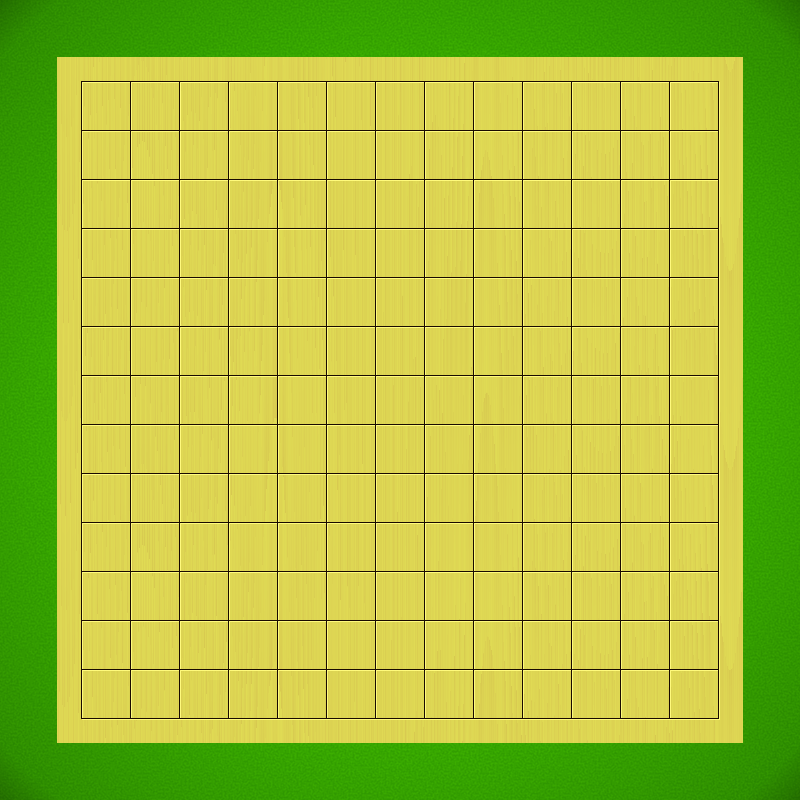
-
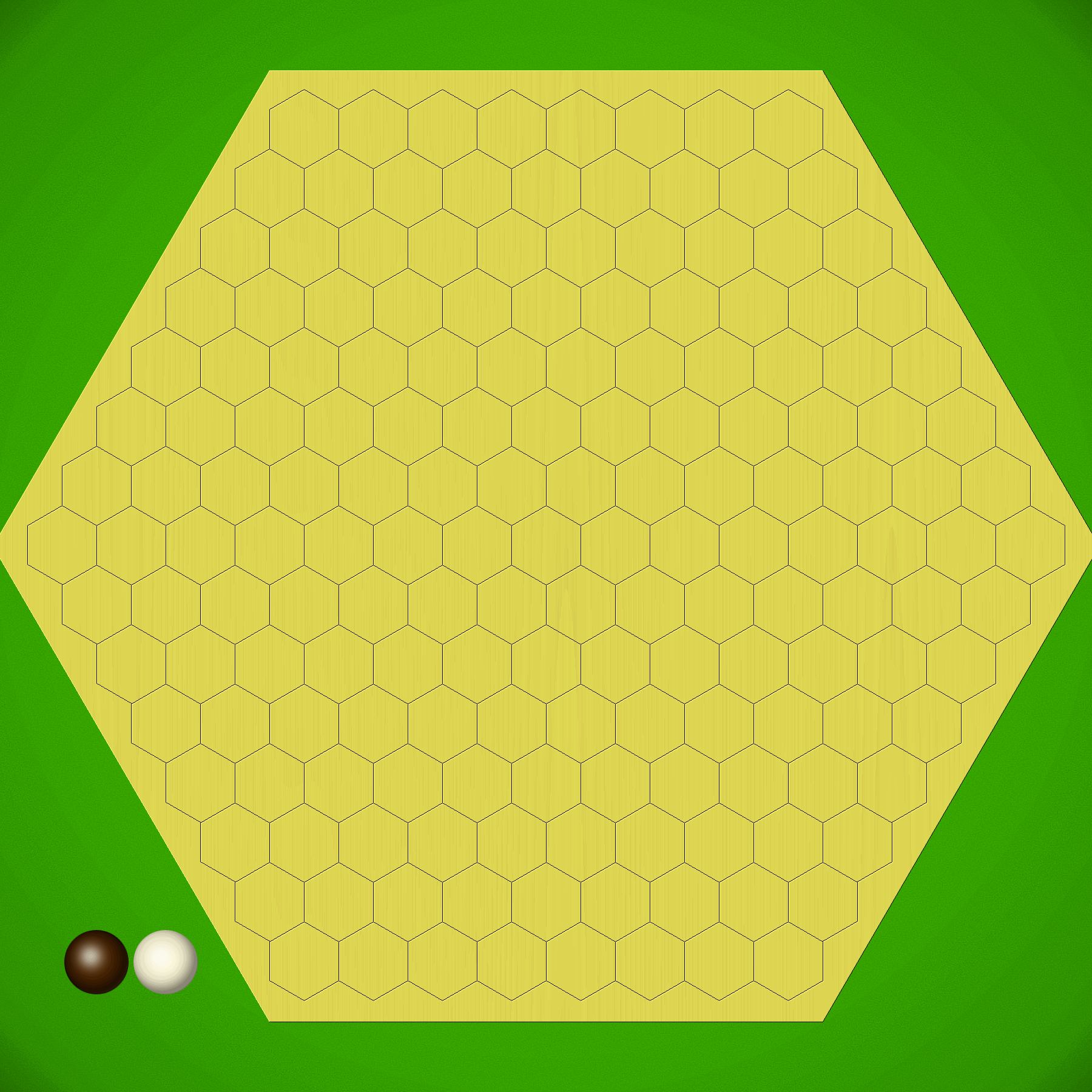
Xodd/Yodd — This pair of games tasks players with building less groups of their colour on the board, but players may drop stones of either colour, and at the end of the turn the total number of groups on the board must always be odd. The result is a very unique playing experience, with some highly unusual tactics and appealing whole-board strategies. Xodd (on the square grid) is generally considered more tactical, and Yodd (on the hex grid) more strategic, but both are very worth playing. For what it’s worth, I slightly prefer Yodd, not least because the use of the hex grid helps stop my brain from mistakenly applying Go concepts to this game! Elsewhere I proposed Snodd, a variant played on the snub-square tiling which has five adjacencies on each point, precisely between Xodd’s four adjacencies and Yodd’s six. Like most of my ideas it had no impact at all, but I still think it has potential. 9/10.
Games That Don’t Appear on MindSports (but should, IMO)

Gomoku — The quintessential n-in-a-row game (well, besides the trivial Tic-Tac-Toe), still played all around the world in various subtly different forms. Gomoku is wonderfully simple to grasp — two players take turns placing a stone of their colour on the board, and the first to make a line of 5 stones orthogonally or diagonally wins the game. Note the line must be exactly 5 stones long; six or more doesn’t count! From those simple ingredients arise some complex tactics, with the taking and holding of initiative being perhaps the most important element. In fact, initiative is so important that the first player holds a tremendous advantage (Black wins ~67% of games when opening placements are unrestricted). However, if you play using the Swap2 opening protocol (which is the tournament standard), the first-player advantage drops to a completely reasonable 52% win rate. All told, an accessible, deep, and balanced game (with Swap2), but definitely one for the tacticians. I have fun with it, but I do prefer Pente, as the sandwich captures add significant dynamism to the basic 5-in-a-row framework. 8/10
Renju — Renju is the Japanese take on the 5-in-a-row genre, which aims to reduce Black’s crushing advantage in Gomoku by restricting Black’s powers. In Renju, Black cannot win with lines longer than 5 stones, nor can they place stones in such a way that two open lines of length 3 or 4 are created. White, meanwhile, can win with ‘overlines’ (lines greater than length 5), and may win by forcing Black to make an illegal move. Add to this a rather complicated opening protocol, which I won’t explain here, and you end up with a balanced game, albeit one with a steeper learning curve. One major advantage of Renju is that the game is played at a very high level in Japan, and increasingly in Europe and elsewhere in Asia, so there are ample learning resources available and plenty of very strong opponents. I quite enjoy the asymmetry in this game, which makes playing Black feel very different from playing White, and the dedicated playing community means it certainly has ample longevity. 8/10

Excerpt from the monumental Checkers opening guide by GM Richard Pask, Complete Checkers (2020).
Checkers — Also known as Draughts, English Draughts, or Straight Checkers, this 8×8 classic suffered unjustly from Jonathan Schaeffer and his engine Chinook weakly solving the game in 2007 (it’s a draw). This game-theoretic result has no real bearing on actual play between humans, and alternative opening options like 11-Man Ballot ensure the game has plenty of life left in it. GM Richard Pask has written some excellent books on the game in recent years (like Complete Checkers above), and great YouTubers like AZCheckers continue to play, analyse and promote this venerable game. The upcoming World Championship has a $32,000 prize fund, so previous reports that competitive Checkers is ‘as dead as the dodo’ were a bit exaggerated. I urge players out there to download Pask’s Checkers for the Novice and give the game a chance; Checkers remains a playable and enjoyable game to this day, and strong opponents are easy to find. 8/10.
-
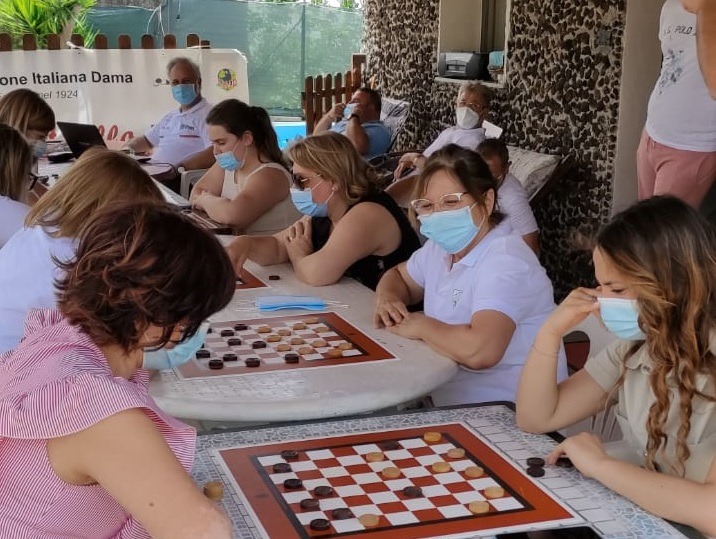
-
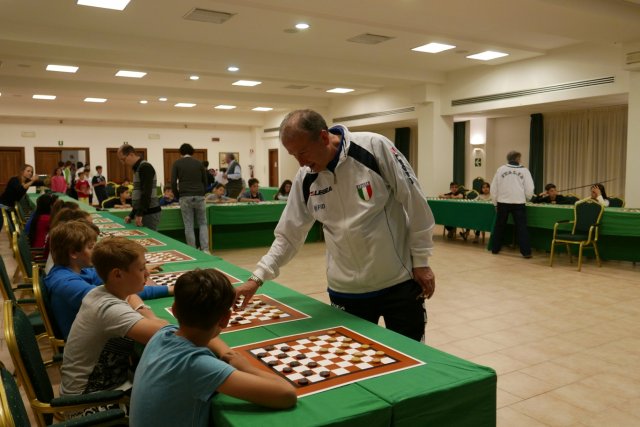
Italian Draughts — Dama Italiana is a unique take on 8×8 English Draughts with one massive rules difference: kings cannot be captured by men. This single change has a profound impact on endgame play especially, and for that reason alone is well worth checking out for fans of Draughts/Straight Checkers. There are some additional wrinkles to the majority capturing rule, which take some getting used to. The Italian Draughts Federation seems highly active, and supports OTB tournament play in both the Italian game and 10×10 International Draughts. I’ve heard tales of 10×10 Dama Italiana being played in some parts of the country, which intrigues me, but I’ve yet to find confirmation. 8/10.
Unfortunately, Christian chose to describe this game in an oddly nasty way:
“It bears testimony to the idea that Italians either prefer ‘complicated’ to ‘simple’ or cannot distinguish between ‘complicated’ and ‘complex’, and in either case are obsessed with hierarchy. Checkers is simple and complex. Italian Draughts is complicated and complex. There’s nothing gained except the loss of simplicity.” (here)
I don’t believe we can generalise about an entire nation on the basis of their Draughts preferences. Besides, the Italian Draughts Federation runs more events for International Draughts than they do for Italian, so this claim doesn’t make any sense — clearly Italians can, and do, appreciate the ‘simpler’ side of the Draughts rules spectrum. Also Dama Italiana does gain something unique from the powerful kings, and the more complex capturing rules work in service of that new dynamic.
-
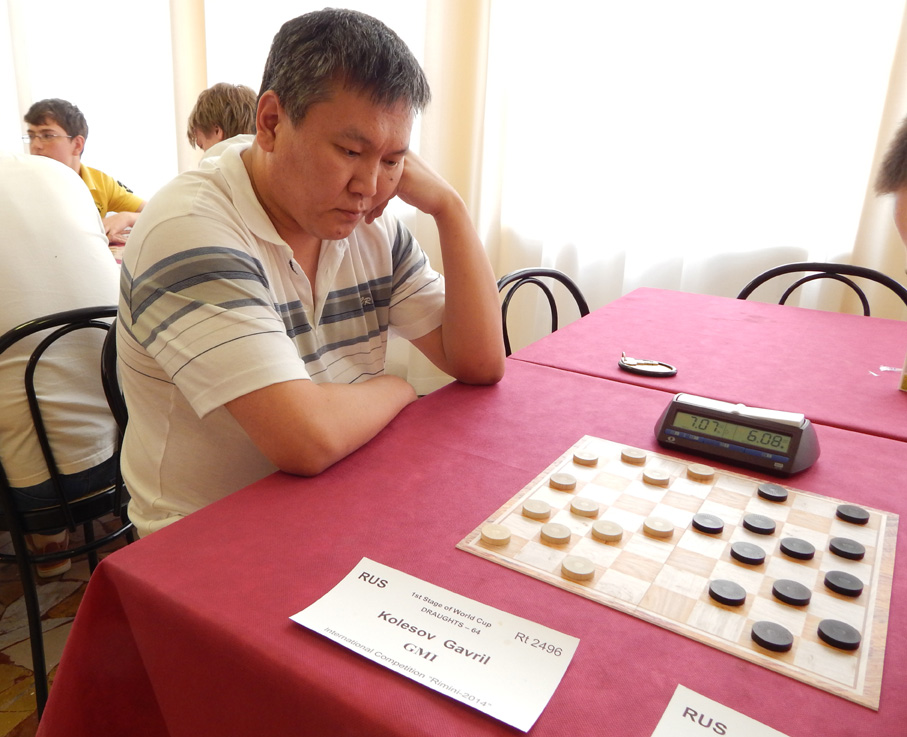
-
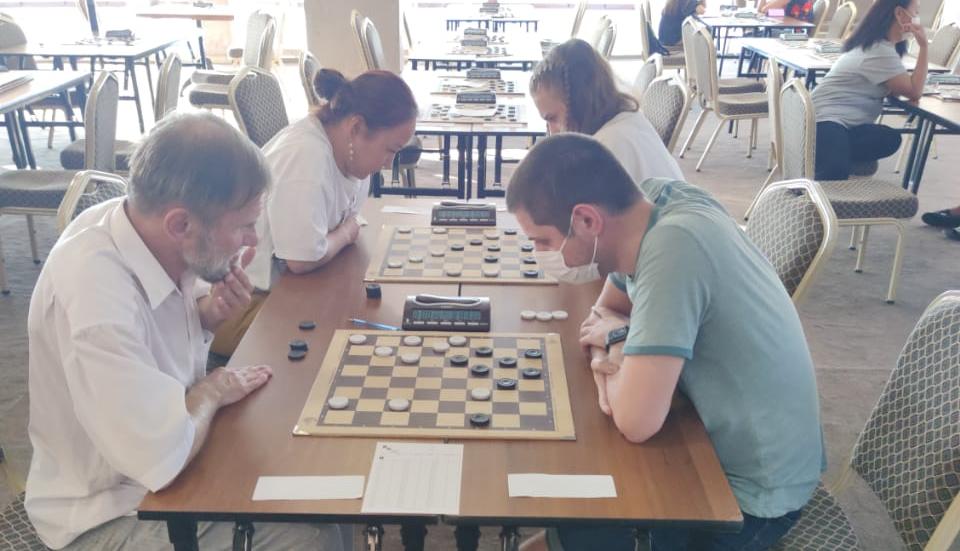
Russian Checkers — Known as Shashki in its native land, Russian Checkers has a distinguished history of high-level competition and sophisticated analysis. Russian Draughts is nearly 8×8 International Draughts, but men can promote to king in mid-move (!), and players are not obligated to take the capture sequence of maximum length. These two simple changes create a game with a distinct character, well worth playing. I strongly encourage the skeptics to try it; you will see that the mid-move promotions and lack of majority capture work very well together, creating a unique positional feel compared to other variants. Russian Checkers also has a large literature associated with it, which is helpful, but unsurprisingly nearly all of it is in the Russian language; a large archive of classic books on the game can be found here. Tournament play occurs all over the world and is supported by the IDF64. Online opponents are readily found on PlayOK. 9/10.

American Pool Checkers — A game criminally underrated in its home country, American Pool Checkers is a close relative of Russian Checkers, where men no longer promote in mid-move. The game found some popularity for a time, particularly among black men in the American South. I hope this game can maintain a foothold, particularly because it’s so rare that we recognise and support the contribution of minority communities to the world of abstract games. Captivating articles like this feature in The Bitter Southerner certainly can’t hurt; how could we not love a game featuring top players with nicknames like ‘Iron Claw’ and ‘Big Willie’? In the meantime, give it a try on Ludoteka. 9/10.
-
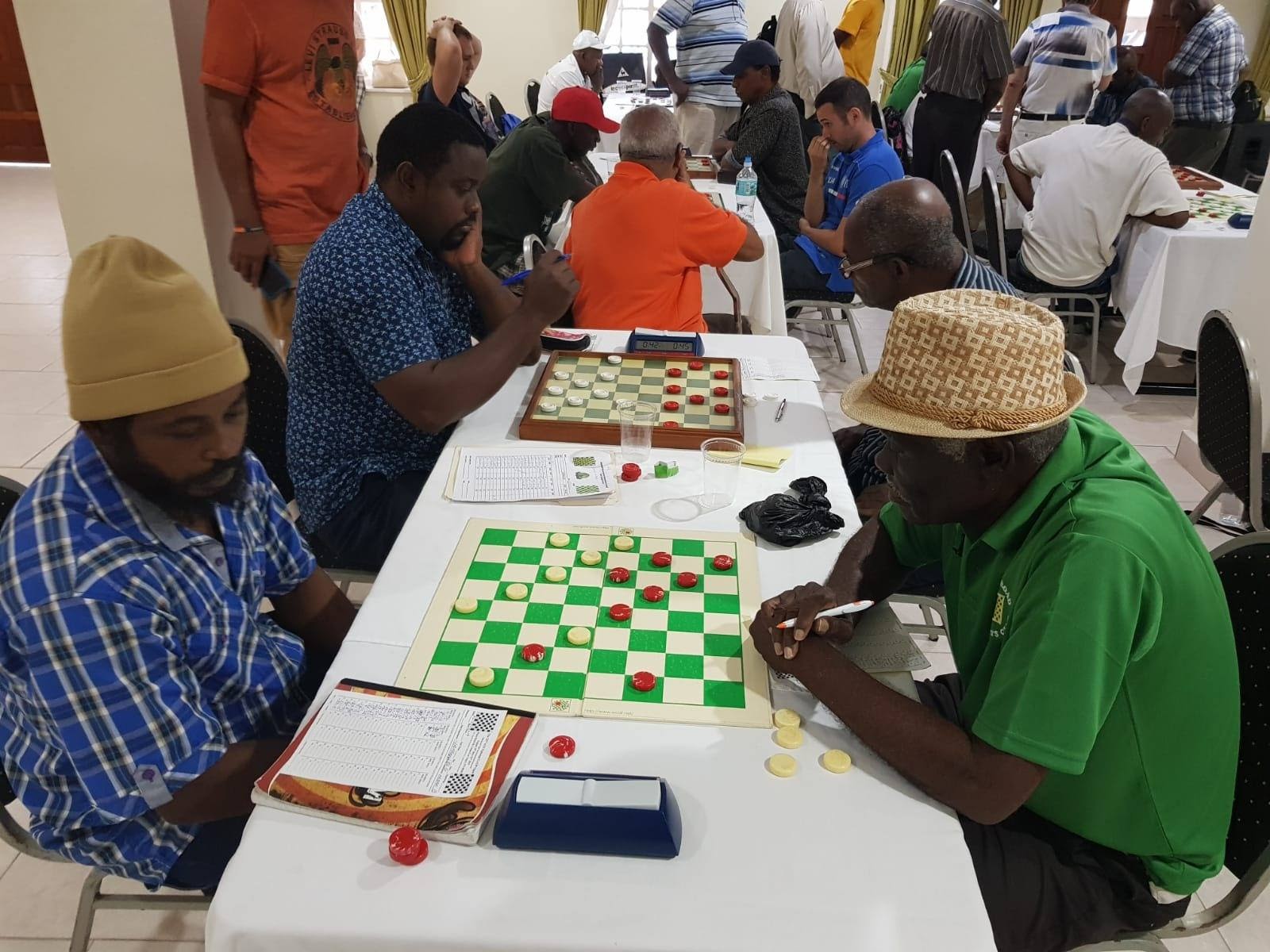
-

Brazilian Draughts — This is a straightforward reduction of 10×10 Draughts to the 8×8 board, all rules are otherwise the same. The result is a quick and action-packed game, great as an introduction to the world of 10×10 Draughts, a quick blitz between longer games, or as a deep and rewarding pursuit in its own right. Like Russian Draughts, Brazilian Draughts is played all over the world and high-level tournament play exists both online and offline. 9/10.
Russian and Brazilian Draughts have one noteworthy difference from 10×10 Draughts, besides the obvious: in 10×10, four kings are required to ensure victory against one, but in these 8×8 games, three kings can trap a lone king so long as they can occupy the long diagonal. The key formation is known as Petrov’s Triangle:
-

-
The Black king is trapped! Play it out — Black to move — and you’ll see he has no way out.
So there we go, a great big pile of reviews and impressions of many of the games on MindSports. I hope someone out there finds this useful, at least fodder for discussion if nothing else; but if not, at least I’ve collected all these thoughts in one place for my own future reference.
As you can tell from this sizeable list, there are quite a lot of games on MindSports. Ideally the Chess and Shogi sections would be more comprehensive — it’s a bit funny to me that MindSports has stuff like Armenian Draughts but not Shatranj, Makruk or Sittuyin — but there’s tremendous variety there nonetheless. I highly recommend checking it out for yourself, and I’m happy to accept challenges on the site; just be aware I sometimes disappear for long periods due to being overworked.
I’ve resolved before to write future articles about certain things, and have often failed to follow through, partly due to a general lack of interest from others and partly from my own lack of time and energy. About all I’m willing to promise anymore is that, assuming the next pandemic wave(s) leave society mostly intact, I’ll keep writing about games here and there, when I can.
